If you’re a flower enthusiast, gardener, or simply someone who loves discovering new blooms, you’re in for a treat. This curated guide features 60 stunning flowers that start with T, showcasing a wide range of species from vibrant tropical blossoms to delicate wildflowers. Each flower brings its own charm, making this list both visually captivating and botanically diverse.
Exploring flowers that start with T is more than just an alphabetical adventure—it’s a journey through color, form, and fragrance. From the exotic Tropaeolum to the elegant Triteleia, these flowers span climates and continents, offering inspiration for every kind of garden or floral design. Whether you’re planning a themed garden or expanding your plant knowledge, these T-named beauties are sure to delight.
In this article, you’ll find detailed descriptions, pictures, and botanical names for each flower. Whether you’re looking for drought-tolerant ground covers or tropical showstoppers, our collection of flowers that start with T will help you discover new favorites and appreciate the variety the plant world has to offer.
Different Types of Flowers That Start With T
Tulip (Tulipa spp.)

Tulips are one of the most beloved spring-blooming flowers, symbolizing love, elegance, and new beginnings. Native to Central Asia and widely cultivated in the Netherlands, tulips come in a stunning range of colors including red, pink, yellow, purple, and even multi-colored varieties. Their cup-shaped blooms sit atop tall, slender stems with smooth, strap-like leaves.
These flowers are typically identified by their symmetrical shape and six petal-like tepals. Some tulip varieties feature frilled edges, double blooms, or even parrot-like feathered petals. They are often used in formal garden beds, borders, and spring floral displays due to their bold and clean appearance.
Tulips prefer well-drained soil and full sun to partial shade. They thrive in USDA hardiness zones 3 through 7 and are usually planted as bulbs in the fall for spring blooming. Once blooming is complete, it’s important to allow the foliage to die back naturally to nourish the bulb for the next season.
Tiger Lily (Lilium lancifolium)

Tiger lilies are dramatic and eye-catching perennials known for their vivid orange petals marked with dark brown or black spots. These hardy lilies originate from Asia and are highly prized for their bold coloration and tall, upright stems, which can grow up to 4 feet in height.
They are easily identified by their downward-facing flowers with recurved petals and prominent stamens. Tiger lilies often bloom in mid to late summer and can produce several flowers on a single stem. The bulbils that grow along the stem leaf axils can be used for propagation, making them easy to spread in the garden.
Tiger lilies grow best in full sun to light shade and prefer moist, well-drained soil. They are suitable for USDA zones 3 through 9 and are relatively low maintenance once established. These lilies are also deer-resistant and attract butterflies, adding both beauty and biodiversity to any garden.
Tuberose (Polianthes tuberosa)
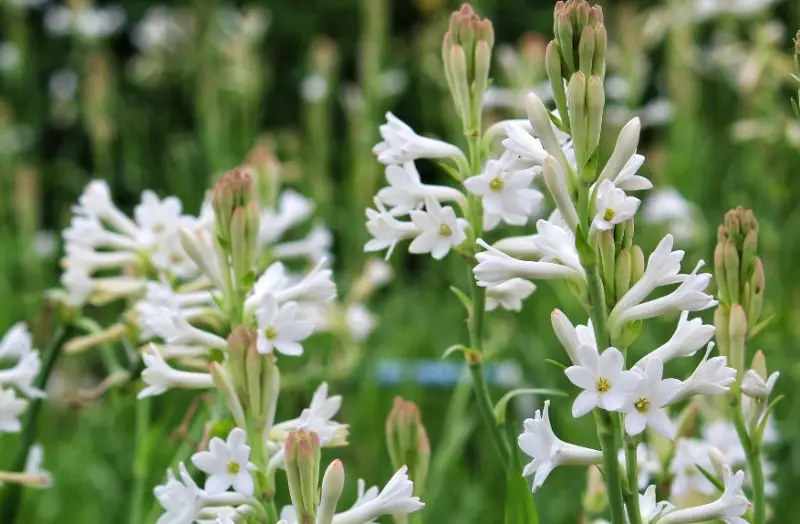
Tuberose is a fragrant night-blooming flower native to Mexico, prized for its rich, sweet scent that’s often used in perfumery. The plant produces tall, upright spikes bearing clusters of waxy, white, tubular flowers that open gradually from the bottom upward.
Easily identified by their pure white blooms and long, strap-like leaves, tuberoses make excellent cut flowers. They are especially popular in tropical and subtropical regions for gardens and ceremonial arrangements, emitting their fragrance most strongly in the evening hours.
Tuberoses require full sun and well-drained soil, and they do best in USDA hardiness zones 7 through 10. In colder climates, tuberose bulbs should be dug up before the first frost and stored indoors over winter. Regular watering and warm temperatures are key to successful blooming.
Tithonia (Tithonia rotundifolia)
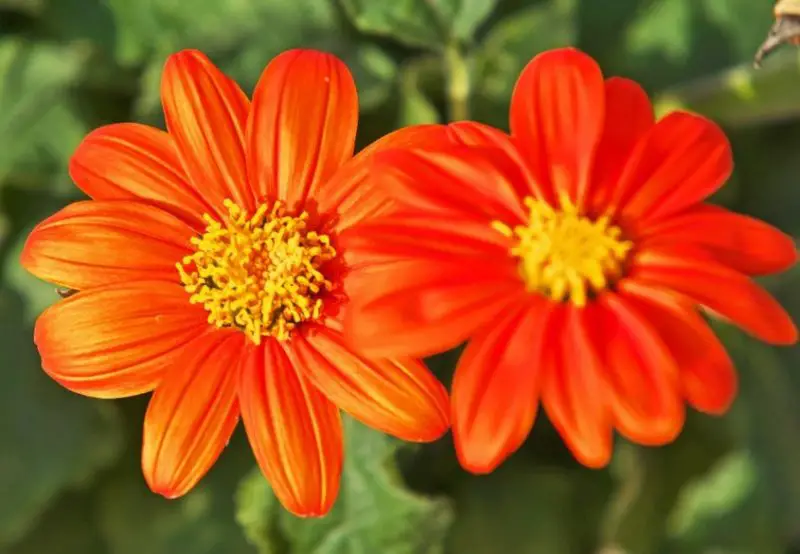
Tithonia, also known as Mexican sunflower, is an annual flowering plant with vibrant orange-red daisy-like blooms that attract pollinators like butterflies and bees. Native to Mexico and Central America, this bold plant adds a tropical flair to summer gardens.
Its flowers are typically 2 to 3 inches wide with golden centers, and the plant can reach heights of 4 to 6 feet, making it an excellent backdrop in borders or wildflower gardens. The foliage is coarse and somewhat velvety, with broadly rounded, lobed leaves.
Tithonia thrives in full sun and prefers sandy, well-drained soil. It is suitable for USDA zones 5 through 10 as an annual, and it is drought-tolerant once established. This plant blooms profusely from mid-summer until frost and requires minimal care beyond occasional watering and deadheading.
Trumpet Vine (Campsis radicans)
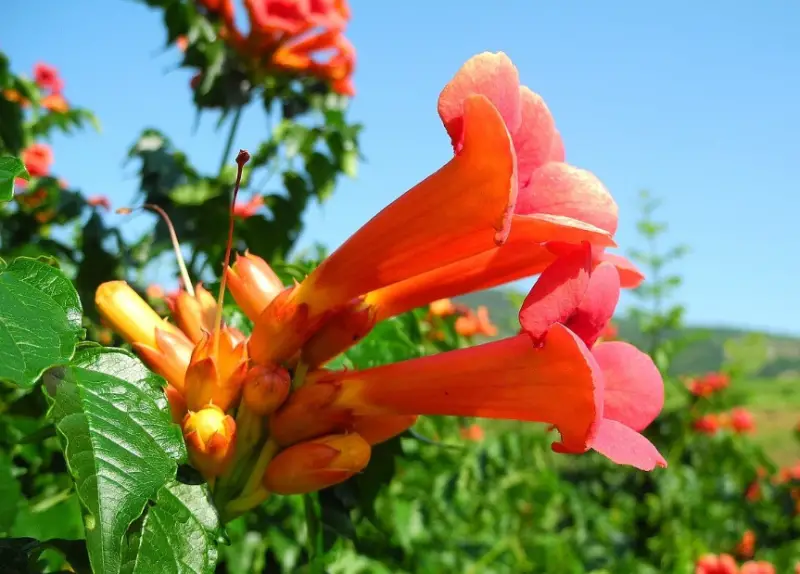
Trumpet vine is a vigorous, woody climbing vine known for its stunning clusters of tubular, trumpet-shaped flowers in shades of red, orange, or yellow. Native to the southeastern United States, this plant is a favorite for attracting hummingbirds and butterflies.
It is easily identified by its lush green foliage, aerial rootlets that cling to structures, and the bold, flaring flowers that bloom profusely in summer. Trumpet vine can cover walls, trellises, or fences quickly, growing up to 30 feet long or more under ideal conditions.
Trumpet vine is hardy in USDA zones 4 through 9 and prefers full sun and well-drained soil. While it is tolerant of poor soil and drought, it can become invasive without regular pruning. Containing its growth and planting it away from house foundations is recommended.
Toad Lily (Tricyrtis spp.)
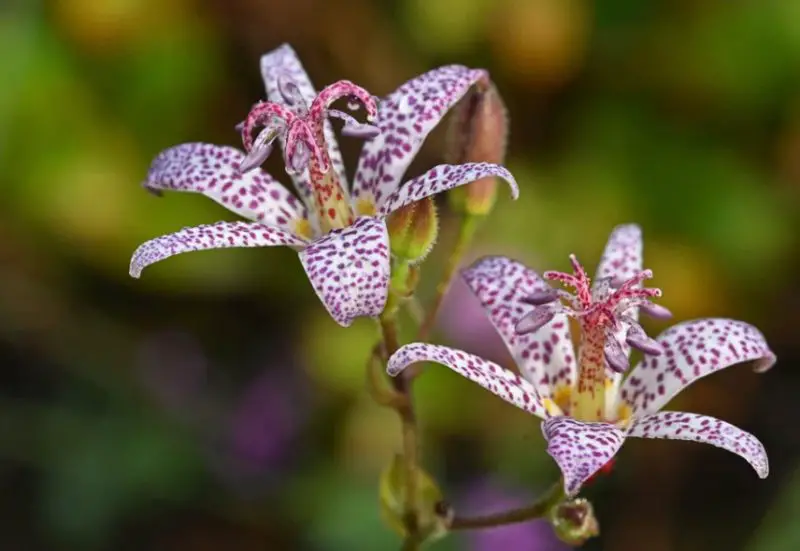
Toad lilies are unique and exotic-looking shade-loving perennials that bloom in late summer to fall. Native to East Asia, their orchid-like flowers are small but intricate, often white, purple, or lavender with distinctive speckled patterns.
They are easily recognized by their star-shaped flowers and arching stems that give a delicate appearance. The foliage is lance-shaped and often grows in a staggered, ladder-like formation along the stems. Toad lilies are perfect for woodland gardens or shaded borders.
These plants prefer moist, well-drained soil and partial to full shade. They grow best in USDA hardiness zones 4 through 9. While toad lilies are relatively low maintenance, they benefit from mulching and consistent watering to maintain healthy blooms in shaded, sheltered locations.
Thistle (Cirsium spp.)

Thistle is a hardy, spiny plant known for its vibrant purple flower heads and sharp, prickly leaves. Native to Europe and Asia but now widespread in many parts of the world, it is particularly famous as the national symbol of Scotland. The blooms are often round and tufted, perched atop tall stems covered in spines.
These plants are easily identified by their deeply lobed, serrated leaves and bristly texture. Despite their thorny appearance, thistles are attractive to bees and butterflies, making them a valuable addition to pollinator gardens. They tend to bloom in late spring through summer and can grow quite tall, often reaching up to 5 feet.
Thistles are drought-tolerant and thrive in full sun with well-drained soil. They grow well in USDA zones 3 through 9, depending on the species. While often considered weeds in unmanaged areas, cultivated varieties can add bold texture and wild charm to naturalized or cottage gardens.
Tickseed (Coreopsis spp.)

Tickseed is a cheerful, sun-loving perennial with daisy-like flowers that come primarily in shades of yellow, although some cultivars feature red, orange, or bi-colored blooms. Native to North and South America, these flowers are known for their long blooming period and ability to brighten any garden space.
Tickseed plants are characterized by their slender stems, finely cut foliage, and abundant small flowers with rounded petals and golden centers. They bloom from early summer into fall and are commonly used in borders, meadows, and pollinator gardens.
Tickseed is easy to grow, requiring full sun and well-drained soil. It thrives in USDA hardiness zones 4 through 9 and is tolerant of drought and poor soils once established. Deadheading spent blooms will encourage continuous flowering throughout the season.
Thunbergia (Thunbergia alata)

Thunbergia, commonly known as Black-eyed Susan vine, is a fast-growing tropical climber prized for its eye-catching flowers. The blooms are typically bright yellow or orange with a dark central eye, giving them a dramatic look. Native to Eastern Africa, this vine adds vibrant color to trellises, fences, and hanging baskets.
This vine is identifiable by its heart-shaped leaves and trumpet-shaped flowers that bloom profusely throughout the warm months. The plant twines naturally and can reach heights of 5 to 8 feet, making it perfect for vertical displays in sunny areas.
Thunbergia prefers full sun to partial shade and well-drained soil. It thrives in USDA zones 10 through 11, but can be grown as an annual in cooler climates. Regular watering, occasional feeding, and trellis support will help it flourish and bloom generously.
Texas Bluebonnet (Lupinus texensis)
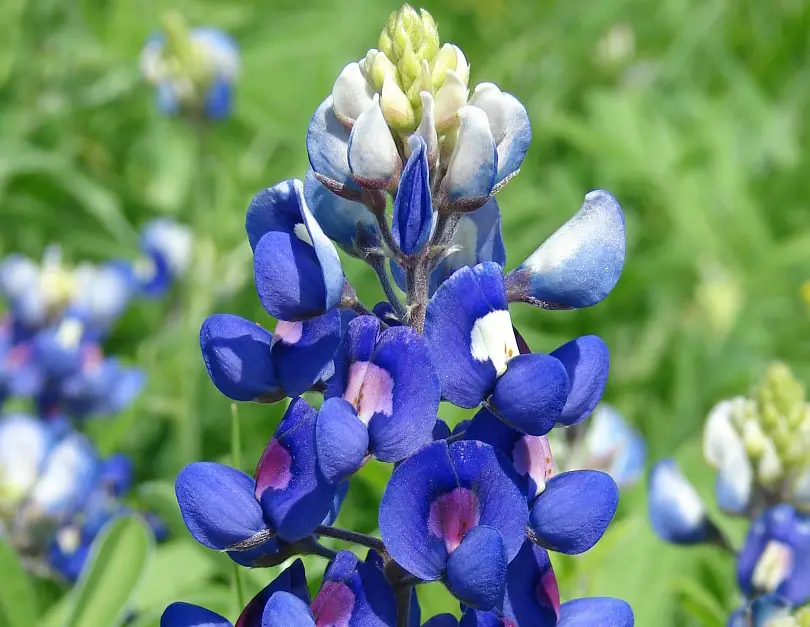
Texas Bluebonnet is a beloved wildflower and the official state flower of Texas. Known for its striking blue spiked blossoms, this member of the legume family blankets fields and roadsides in vibrant color each spring. The flowers have a sweet fragrance and a distinct, pea-like shape.
Easily recognizable by their dense, cone-shaped flower spikes and compound leaves with five to seven leaflets, Texas bluebonnets bloom in early to mid-spring and typically grow about 12 to 24 inches tall. Their intense blue color often features a white tip, giving them a painted appearance.
These wildflowers prefer full sun and well-drained, sandy or rocky soil. They thrive in USDA zones 4 through 8. While they can self-sow readily, proper timing for fall seeding is crucial for a successful spring bloom. Minimal watering and care are needed once established.
Trailing Petunia (Calibrachoa spp.)
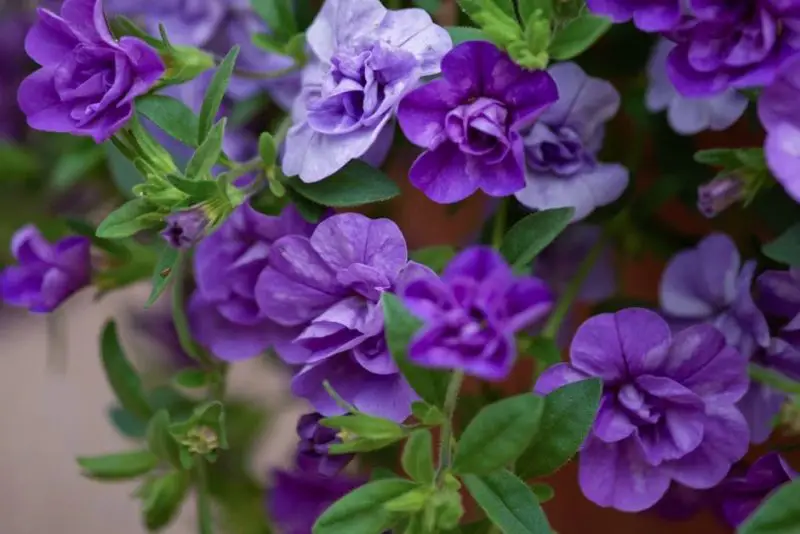
Trailing Petunia, also known as Million Bells, is a vibrant flowering plant that resembles miniature petunias. It is a favorite choice for hanging baskets, containers, and window boxes due to its trailing habit and abundant, colorful blooms that appear from spring through fall.
The small, bell-shaped flowers come in a wide array of colors, including pink, purple, yellow, red, and white. Calibrachoa plants have a compact, cascading growth habit with narrow, slightly sticky leaves, and they bloom continuously without the need for deadheading.
These plants thrive in full sun and prefer well-drained, slightly acidic soil. Ideal for USDA zones 9 through 11, they are typically grown as annuals in cooler climates. Regular watering and balanced fertilizer help maintain lush growth and prolific flowering throughout the season.
Torch Lily (Kniphofia uvaria)
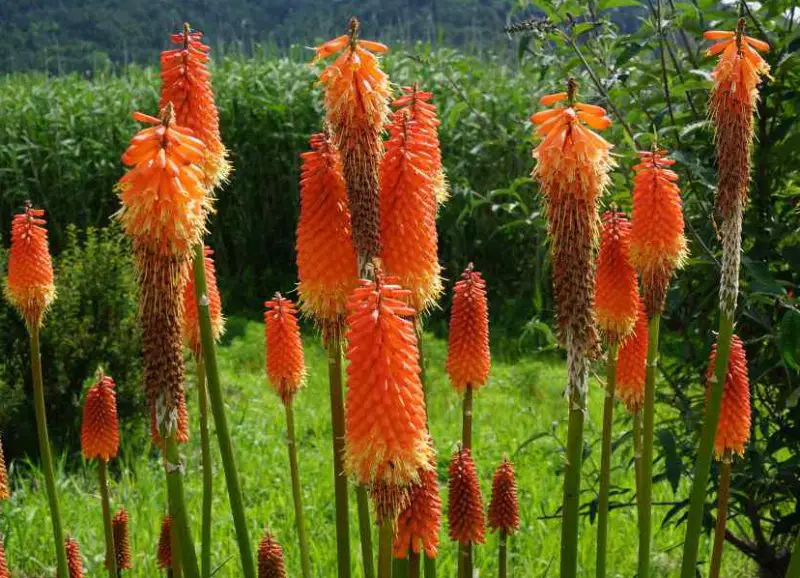
Torch Lily, also known as Red Hot Poker, is an exotic-looking perennial that features tall spikes of tubular flowers resembling flaming torches. Native to South Africa, this plant offers a striking combination of red, orange, and yellow hues as the blooms mature from top to bottom.
The flowers are borne on upright stalks above clumps of narrow, grass-like foliage. Blooming from late spring to summer, torch lilies can grow up to 3 to 5 feet tall, making them a standout in mixed perennial beds and borders. They are also attractive to hummingbirds and butterflies.
Torch lilies prefer full sun and well-drained soil, thriving in USDA hardiness zones 5 through 9. Once established, they are drought-tolerant and low maintenance. Removing spent flower stalks and providing winter protection in colder regions will keep them thriving year after year.
Tropaeolum (Tropaeolum majus)
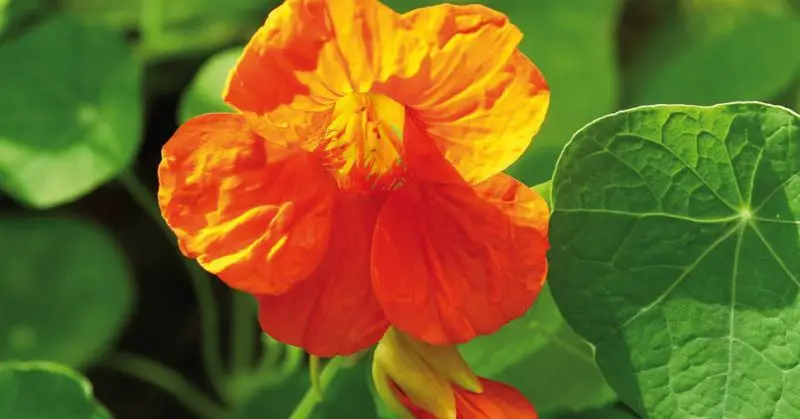
Tropaeolum, commonly known as nasturtium, is a cheerful and edible flowering plant known for its round, lily pad-like leaves and vibrant blooms in shades of orange, red, and yellow. It originates from South America and is often grown for both ornamental beauty and culinary uses.
The plant has a sprawling or climbing habit, depending on the variety, and typically grows up to 1 to 3 feet tall. The funnel-shaped flowers have a unique spur at the back and are attractive to pollinators. Its rounded leaves are bright green and have a slightly waxy texture.
Nasturtiums are very easy to grow and thrive in full sun to partial shade. They prefer poor to average, well-drained soil and bloom best when not over-fertilized. They grow well in USDA zones 9 through 11 but can be cultivated as annuals in cooler zones. Their flowers and leaves are edible, adding a peppery flavor to salads.
Tree Peony (Paeonia suffruticosa)
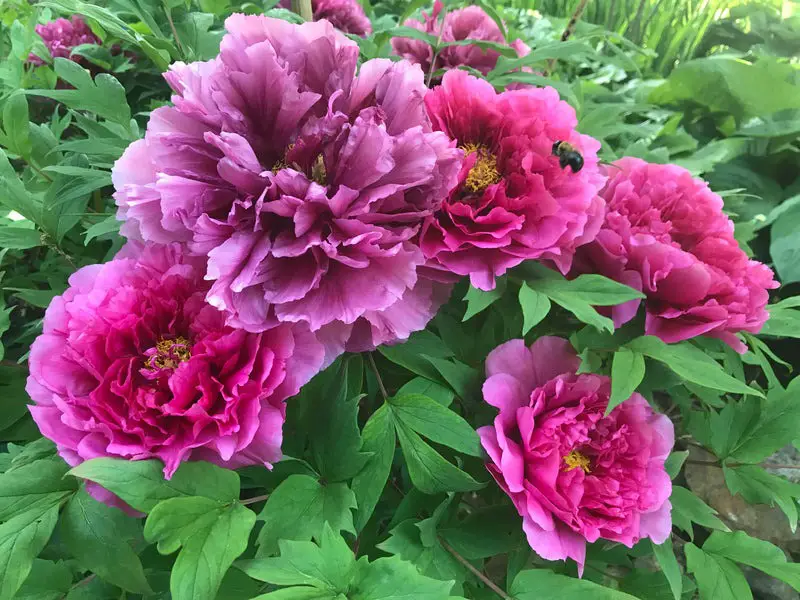
Tree peony is a deciduous woody shrub that produces exceptionally large, ruffled blooms in spring. Native to China, this luxurious flower has been cultivated for centuries and is celebrated for its beauty, fragrance, and symbolism of prosperity and honor.
Unlike herbaceous peonies, tree peonies have a woody base that remains above ground year-round. The flowers are often 6 to 10 inches wide and appear in a range of colors, including pink, white, yellow, and purple. The finely cut, dark green foliage adds elegance even after blooming.
Tree peonies grow best in full sun to partial shade and prefer well-drained, fertile soil. They thrive in USDA zones 4 through 8 and are generally cold-hardy. Minimal pruning is required, and plants should be mulched to protect the roots. These peonies may take a few years to mature, but they reward patience with spectacular blooms.
Tea Rose (Rosa hybrida)
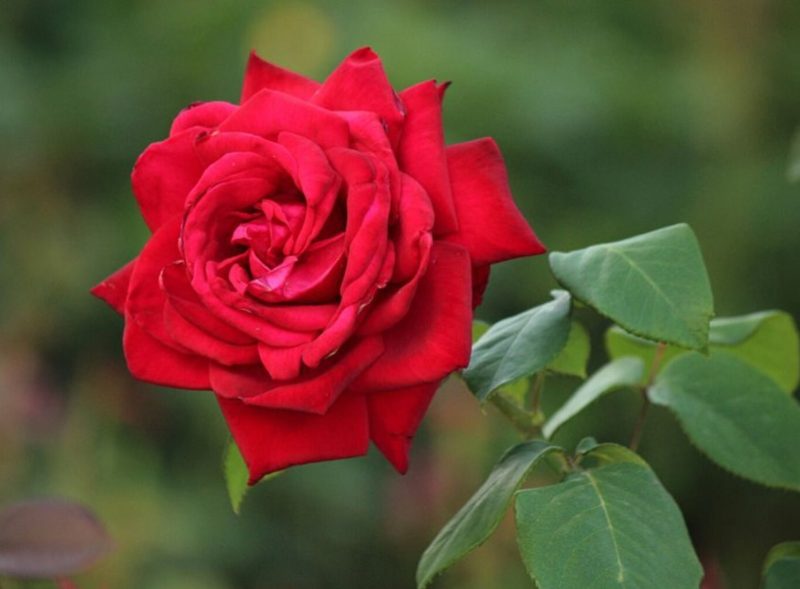
Tea roses are a classic type of hybrid rose known for their elegant, high-centered blooms and delightful fragrance. They are a result of crossing Chinese tea roses with European varieties, and they continue to be a garden favorite for their graceful flowers and long stems.
The blooms of tea roses typically come one per stem, making them ideal for cutting. They are available in a wide range of colors including pink, red, yellow, white, and even bi-color. The leaves are glossy and deep green, and the plant often produces flowers repeatedly throughout the growing season.
Tea roses require full sun and well-drained, fertile soil. They thrive in USDA zones 5 through 9 with proper winter protection in colder areas. Regular pruning, feeding, and watering are essential for healthy growth and prolific blooms. Good air circulation helps prevent common rose diseases such as black spot and powdery mildew.
Texas Sage (Leucophyllum frutescens)
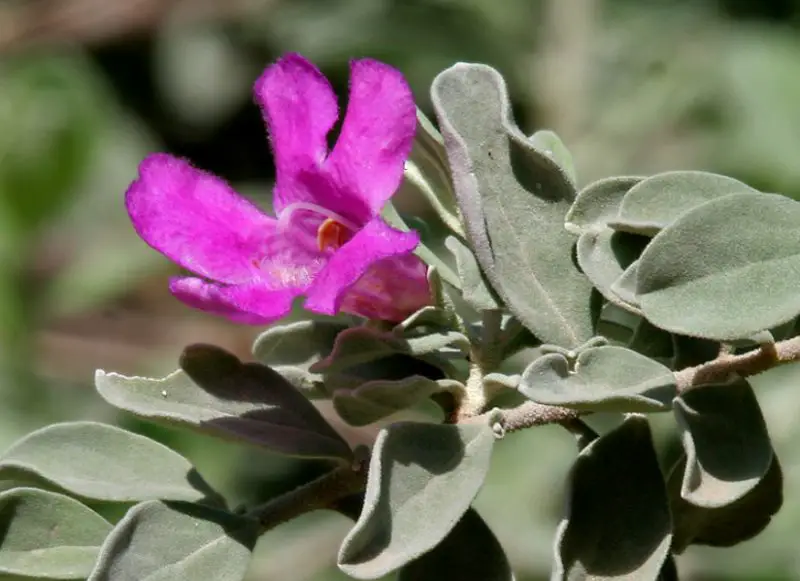
Texas sage, also known as barometer bush or Texas ranger, is a hardy evergreen shrub native to the southwestern United States and Mexico. It features silvery-gray foliage and is adorned with bell-shaped, lavender to purple flowers that often appear after rain.
This drought-tolerant shrub typically grows 3 to 5 feet tall and wide, though some varieties can reach up to 8 feet. Its small, soft leaves have a silvery sheen, which adds ornamental value even when the plant is not in bloom. The flowers attract bees and butterflies and appear intermittently from spring to fall.
Texas sage thrives in full sun and prefers dry, well-drained soils. It is highly tolerant of heat and drought and grows best in USDA zones 8 through 11. Pruning can help maintain a compact shape, and minimal watering is required once established. It’s a perfect choice for xeriscaping and low-maintenance landscapes.
Tropical Hibiscus (Hibiscus rosa-sinensis)
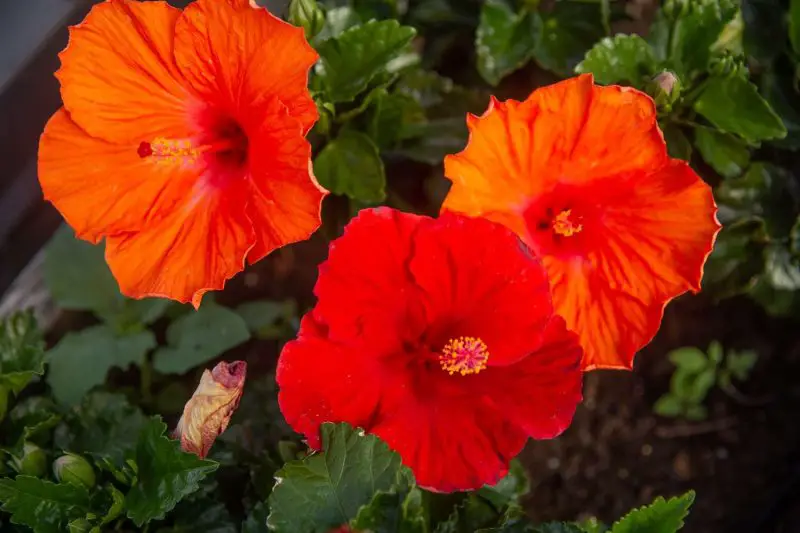
Tropical hibiscus is a vibrant flowering shrub known for its large, trumpet-shaped flowers in bold colors such as red, orange, pink, yellow, and white. Native to Asia, it is a popular ornamental plant in tropical and subtropical climates due to its continuous blooming and showy appeal.
The plant features glossy, dark green leaves and can grow up to 8 feet tall in the right conditions. The flowers can span up to 6 inches across and often have contrasting throats or ruffled edges. Although each flower typically lasts only a day, the plant blooms profusely during warm months.
Tropical hibiscus thrives in full sun and needs regular watering and rich, well-drained soil. It is best suited to USDA zones 9 through 11, but can be grown in containers and brought indoors during winter in cooler regions. Regular pruning, fertilizing, and pest control will keep the plant lush and blooming.
Tuberous Begonia (Begonia × tuberhybrida)
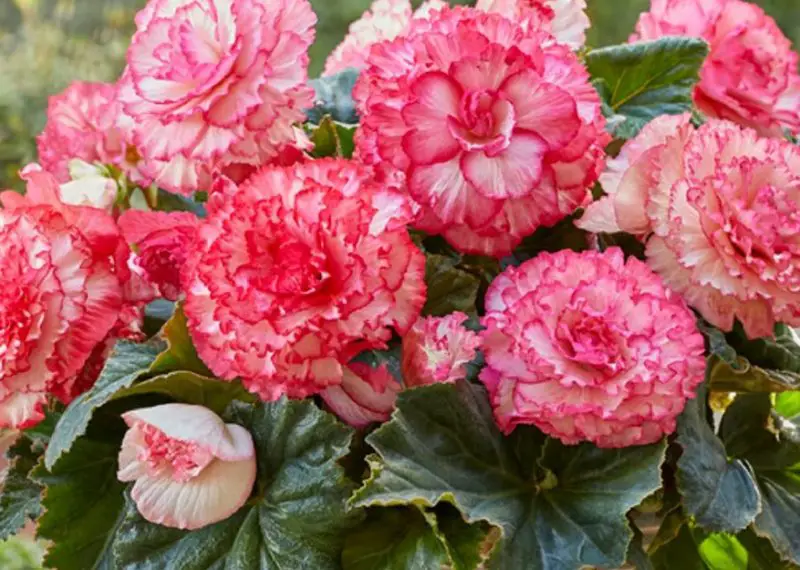
Tuberous begonia is a lush flowering plant cherished for its large, rose-like blooms and attractive foliage. These begonias are especially popular for container gardening and shaded garden beds. They bloom in a range of vivid colors, including red, pink, orange, yellow, and white.
The plant is easily identified by its thick stems, succulent-like leaves, and flamboyant flowers that can be either single or double. Some varieties have trailing habits, ideal for hanging baskets, while others are more upright. The leaves are typically dark green or bronze and often asymmetrical.
Tuberous begonias prefer partial shade and rich, well-draining soil. They thrive in USDA zones 9 through 11 and should be treated as annuals or lifted and stored indoors in colder areas. These plants require consistent moisture and benefit from deadheading to encourage continuous blooming throughout summer and fall.
Trailing Lantana (Lantana montevidensis)

Trailing lantana, known for its cascading growth habit, is a versatile and colorful plant that flourishes in full sun. The small flowers, typically in shades of purple, lavender, and white, form dense clusters and attract butterflies and bees. Its trailing nature makes it ideal for hanging baskets, containers, or ground cover.
This variety of lantana can spread up to 3 feet wide but remains low to the ground, often growing to 1 to 2 feet tall. Its small, dark green leaves contrast beautifully with the vibrant blooms. The plant blooms profusely from late spring through fall, providing a continuous show of color.
Trailing lantana thrives in well-drained soil and requires minimal care. It is highly tolerant of heat and drought, making it perfect for xeriscaping in USDA zones 8 through 11. Regular deadheading will encourage more flowers, and occasional pruning can keep it neat and tidy.
Tansy (Tanacetum vulgare)
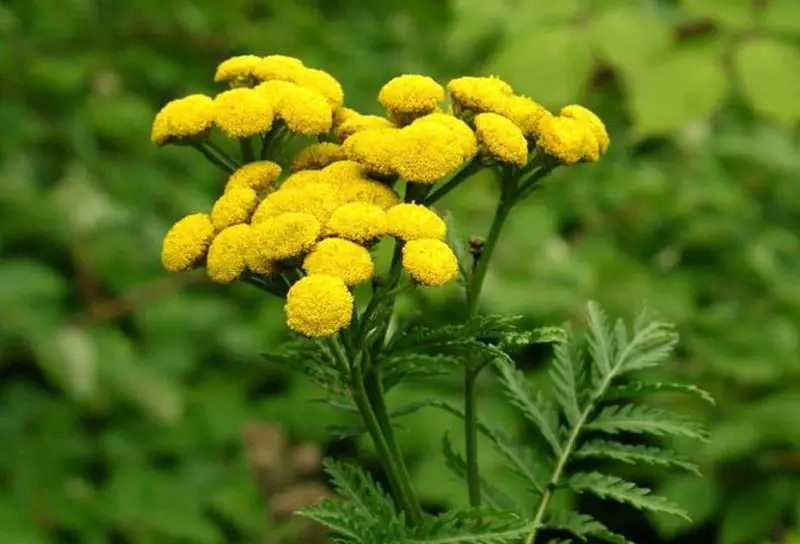
Tansy is a hardy perennial herb known for its distinctive yellow button-like flowers and aromatic leaves. It has been used in traditional medicine and as a natural insect repellent. Tansy is particularly valuable in herb gardens and for attracting pollinators like bees and butterflies.
The plant can grow up to 3 to 4 feet tall and features feathery, fern-like leaves with a strong, often pungent scent. The flowers, which appear in late summer, are bright yellow and clustered in small heads. Tansy has a spreading habit and can sometimes become invasive if not controlled.
Tansy prefers well-drained soil and full sun, thriving in USDA zones 3 through 8. It is drought-tolerant once established but benefits from occasional watering during dry periods. While it requires little maintenance, it should be pruned back in late fall to control its spread and maintain shape.
Treasure Flower (Gazania rigens)
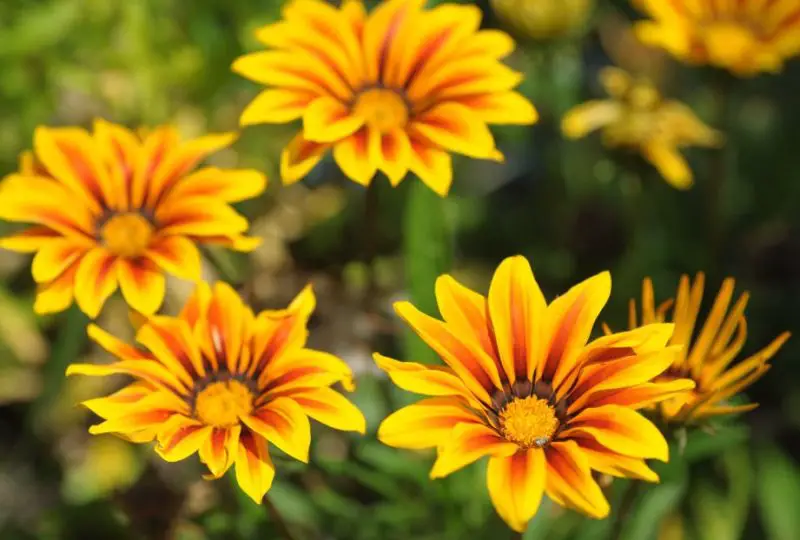
Treasure flower, or gazania, is a vibrant, sun-loving perennial that produces daisy-like flowers in a wide range of bright colors, including orange, yellow, pink, and red. It is highly prized for its ability to thrive in hot, dry conditions and its ability to attract bees and butterflies.
Gazania plants typically grow 12 to 18 inches tall, with their flowers reaching up to 3 inches in diameter. The blooms are striking, with bright petals surrounding a contrasting center. The dark green leaves are often slightly hairy and form a low, bushy mound.
Gazania thrives in well-drained, sandy soil and requires full sun for optimal blooming. It is highly drought-tolerant and grows best in USDA zones 9 through 11. Regular watering and deadheading will encourage new blooms, and occasional fertilizing can improve growth during the blooming season.
Thalictrum (Thalictrum spp.)
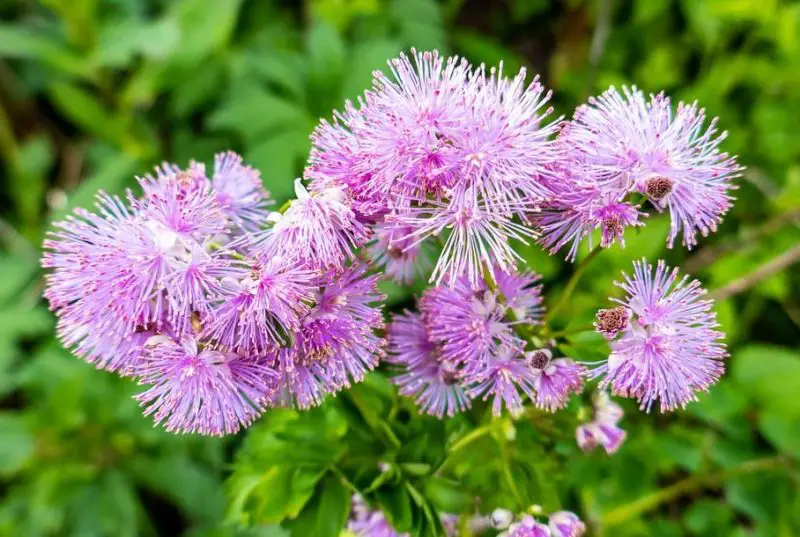
Thalictrum, commonly known as meadow rue, is a genus of perennial plants prized for their delicate, airy flowers and fine, fern-like foliage. The flowers are small, usually in shades of lavender, purple, or white, and grow in loose, airy clusters that resemble clouds of color.
Thalictrum plants vary in height, with some species reaching 2 to 6 feet tall. The feathery, green leaves form a graceful backdrop for the blooms, giving the plant a soft, elegant appearance. It’s often used in woodland gardens or naturalistic landscapes for its graceful presence.
This plant prefers moist, well-drained soil and partial to full shade. Thalictrum thrives in USDA zones 4 through 8 and can tolerate a variety of soil conditions, as long as they are not too dry. Pruning after flowering helps maintain its shape and encourages healthy growth.
Texas Star Hibiscus (Hibiscus coccineus)
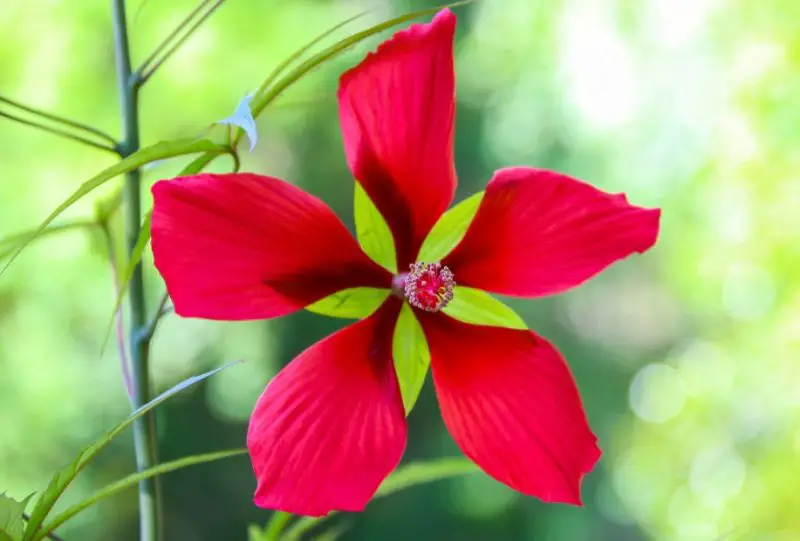
Texas star hibiscus is a striking perennial with large, star-shaped red flowers that are often 6 to 8 inches across. Native to the southeastern United States, this hibiscus is known for its unique, deeply lobed petals that create a star-like shape. It is a hardy plant that can be grown in moist, well-drained soils.
The plant’s tall stems can reach up to 6 feet in height, and its large, glossy, green leaves add to its ornamental value. The blooms appear in late summer to fall, often attracting hummingbirds and butterflies. The Texas star hibiscus has a vigorous growth habit, spreading up to 4 feet wide.
This hibiscus variety thrives in full sun and prefers moist, acidic soil. It is well-suited to USDA zones 7 through 10 and tolerates heat and humidity well. Regular watering is essential during dry periods, and occasional pruning helps maintain a tidy form.
Tamarisk (Tamarix spp.)

Tamarisk, also known as saltcedar, is a shrub or small tree known for its delicate, feathery pink or white flowers that bloom in late spring and early summer. It is a versatile plant, often found in coastal areas, but can also tolerate dry conditions and is commonly used in erosion control.
The plant has thin, needle-like leaves that give it a soft, wispy appearance. Tamarisk typically grows 6 to 15 feet tall, with some species reaching 20 feet. It produces clusters of tiny flowers that have a pleasant fragrance and attract pollinators. The flowers are followed by small, inconspicuous seeds.
Tamarisk thrives in well-drained, sandy, or loamy soil and is adaptable to both full sun and partial shade. It grows well in USDA zones 5 through 9 and is tolerant of drought, salt, and poor soil conditions. Regular pruning helps maintain shape, and it may require occasional care to manage its spread.
Twinspur (Diascia spp.)
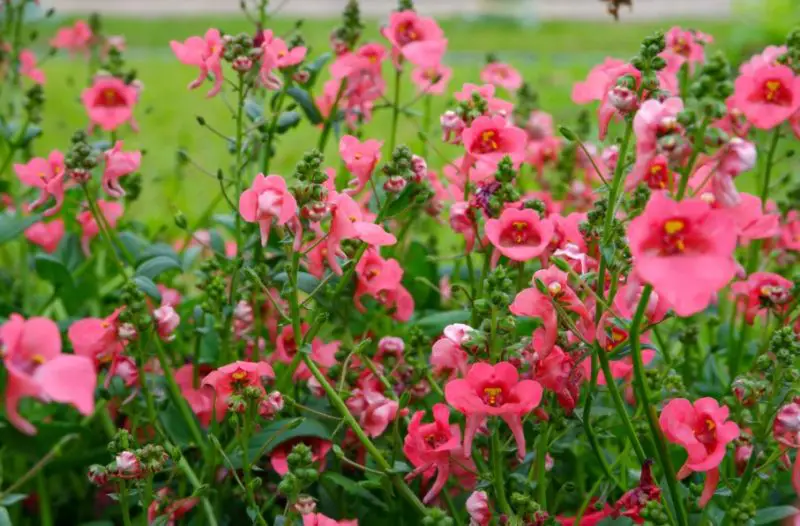
Twinspur is a charming perennial known for its dainty, bright flowers in shades of pink, orange, and red. This plant typically blooms from spring to early fall, attracting butterflies and bees. The flowers grow in small clusters, each featuring two spurs at the back, which give the plant its unique name.
The plant grows up to 12 to 18 inches tall and is often used as an edging plant or in hanging baskets due to its trailing nature. Twinspur has lance-shaped leaves that provide a contrasting dark green backdrop to its colorful blooms. It is perfect for adding a touch of color to borders or containers.
Twinspur thrives in well-drained soil and enjoys full sun or partial shade. It grows best in USDA zones 7 through 10 and is tolerant of dry conditions once established. Regular watering and occasional deadheading will encourage continuous blooming. Pruning can help maintain its shape and compact growth.
Tansy Aster (Machaeranthera tanacetifolia)
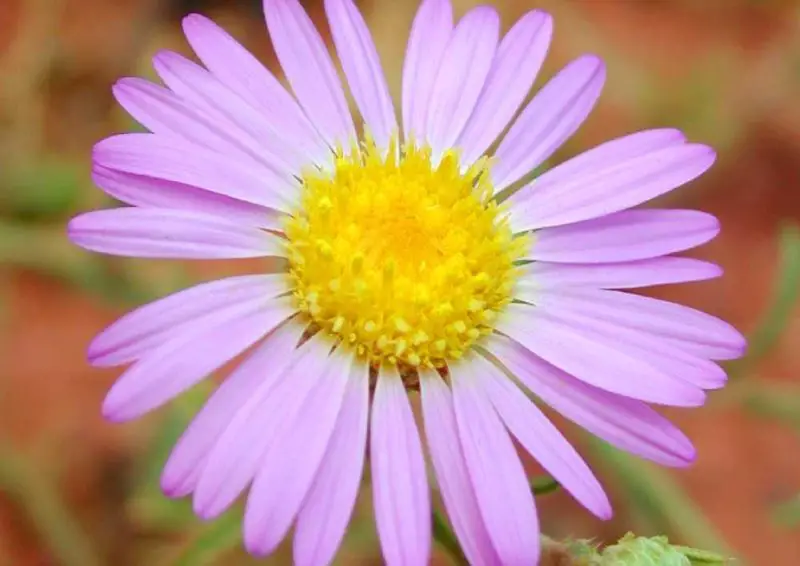
Tansy aster, also known as the tansy-leafed aster, is a hardy, drought-tolerant perennial that produces vibrant, small purple flowers. These flowers bloom in late summer to fall, attracting pollinators such as bees and butterflies. The plant’s bushy habit and numerous flowers make it a great addition to wildflower gardens and meadows.
The plant grows 18 to 24 inches tall and features aromatic, deeply lobed leaves that resemble those of tansy. The flowers, which are small and daisy-like, form in clusters and bloom profusely throughout the fall season. Tansy aster is often used in xeriscaping for its drought resistance.
Tansy aster prefers well-drained soil and thrives in full sun to partial shade. It is well-suited to USDA zones 4 through 8 and tolerates poor soil and dry conditions. Regular watering may be necessary during extended dry spells, but the plant is generally low-maintenance once established.
Tetraneuris (Tetraneuris acaulis)
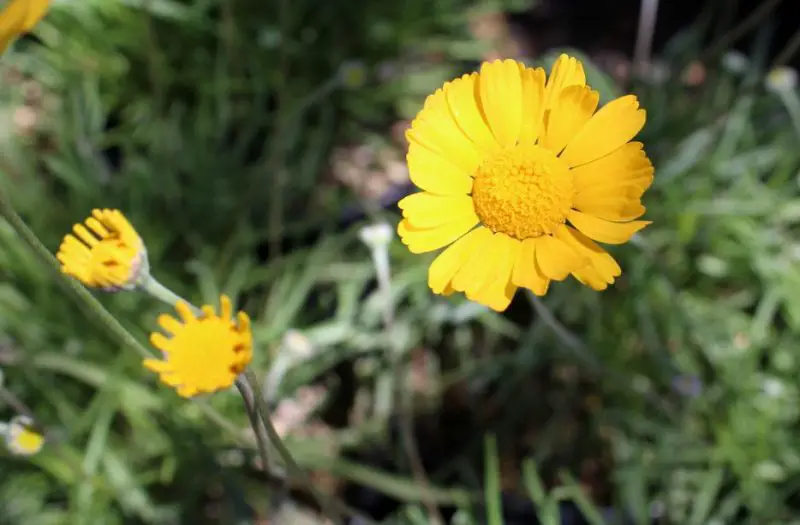
Tetraneuris, commonly known as broomweed, is a low-growing perennial that produces bright yellow daisy-like flowers. The plant grows close to the ground, making it an ideal ground cover or border plant. It is highly drought-tolerant and thrives in arid environments.
This species typically grows up to 6 to 12 inches tall, with the flowers appearing in the late spring or early summer. The green, needle-like leaves add a soft, fine texture to the plant’s overall appearance. Tetraneuris flowers are simple but striking, with bright yellow petals surrounding a dark center.
Tetraneuris thrives in well-drained soil, particularly sandy or rocky soils, and requires full sun to bloom at its best. It grows well in USDA zones 5 through 9 and is highly drought-tolerant once established. Minimal care is required, but occasional pruning will help maintain its tidy form.
Turk’s Cap Lily (Lilium superbum)
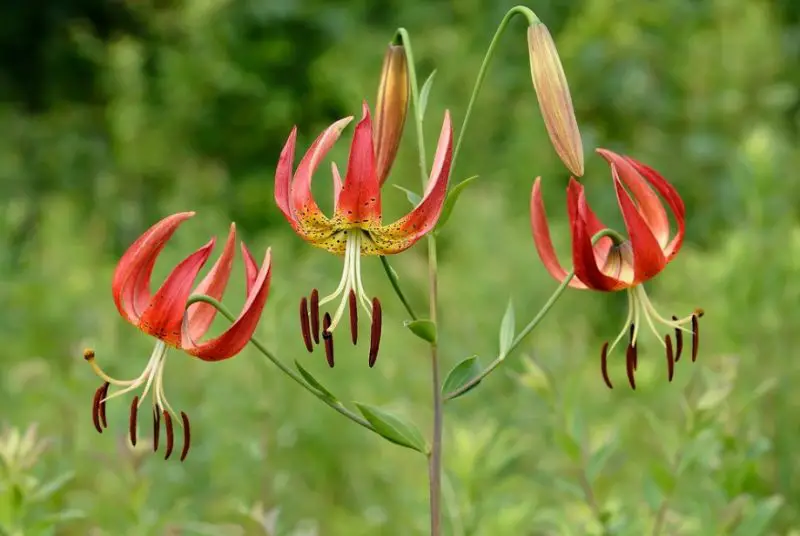
Turk’s cap lily is a striking perennial known for its unique, recurved petals that form a distinct “turban-like” shape. The flowers are large and orange, with dark spots on the petals, creating a dramatic effect. This lily species blooms in mid to late summer, attracting hummingbirds and butterflies with its vibrant color.
The plant can grow up to 6 feet tall, with long, lance-shaped leaves that add texture to the plant. The flowers are often borne in clusters and can have a sweet fragrance. The Turk’s cap lily thrives in moist, well-drained soil and prefers a partially shaded location.
This lily prefers rich, moist soils and grows best in USDA zones 4 through 9. While it tolerates a variety of soil types, it does best in areas with regular watering. Pruning back spent flowers will encourage the plant to produce more blooms, and the plant should be protected from heavy winds due to its tall, slender stems.
Trailing Lobelia (Lobelia erinus)

Trailing lobelia is a popular annual that produces small, vibrant blue, purple, or white flowers in cascading clusters. This plant is often used in hanging baskets, containers, or as a ground cover in beds. The flowers have a delicate, almost bell-like shape, making them a favorite in cottage gardens.
Typically, trailing lobelia grows to 4 to 6 inches tall but spreads widely, reaching up to 12 inches in diameter. The plant’s soft, trailing vines make it an excellent choice for decorative planters or window boxes. The leaves are small and dark green, providing a nice contrast to the colorful blooms.
Trailing lobelia prefers well-drained soil and full sun to partial shade. It thrives in USDA zones 9 through 11 and requires regular watering to maintain its lush growth. Regular deadheading will promote continuous blooming, and occasional fertilizing can boost flower production during the growing season.
Tree Dahlia (Dahlia imperialis)
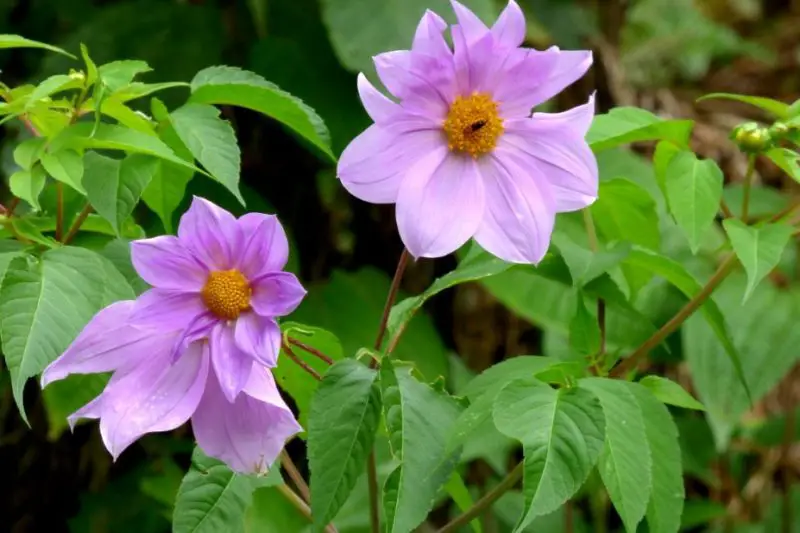
Tree dahlia is a tall, woody perennial that produces large, vibrant flowers with multiple petals, typically in shades of pink or purple. The plant’s dramatic size and striking blooms make it a showstopper in gardens. It blooms from late summer to fall, attracting bees, butterflies, and other pollinators.
Tree dahlias can grow up to 10 feet tall, with long, slender stems supporting the large, colorful flowers. The leaves are dark green, large, and often have a slightly rough texture. This dahlia variety is typically grown for its impressive height and long-lasting blooms, making it a centerpiece in larger gardens.
Tree dahlia prefers rich, well-drained soil and full sun to partial shade. It thrives in USDA zones 8 through 10 and needs regular watering, particularly during dry periods. Due to its height, staking may be necessary to support the plant’s large blooms, and occasional pruning helps maintain a compact form.
Tamarillo Blossom (Solanum betaceum)
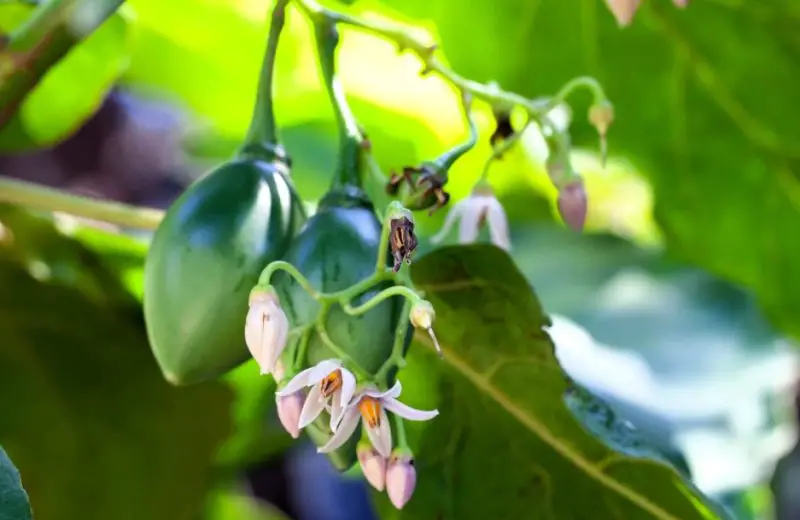
Tamarillo blossom is the delicate white flower of the tamarillo tree, also known as the tree tomato. The flowers are small, star-shaped, and bloom in clusters. Tamarillo blossoms appear in late spring to early summer, producing a subtle fragrance that attracts pollinators such as bees and butterflies.
The plant itself can grow to about 10 to 15 feet tall, with woody stems and large, glossy leaves. While the flowers are not particularly showy, they are essential for the formation of the tree’s fruit. Tamarillo fruits, which resemble small tomatoes, can vary in color, ranging from yellow to red or purple.
Tamarillo trees thrive in well-drained, fertile soils and prefer a sunny location. They grow best in USDA zones 9 through 11, where the climate is warm. Regular watering and occasional feeding will encourage optimal growth, but the plant can tolerate short periods of drought once established.
Tamarind Flower (Tamarindus indica)
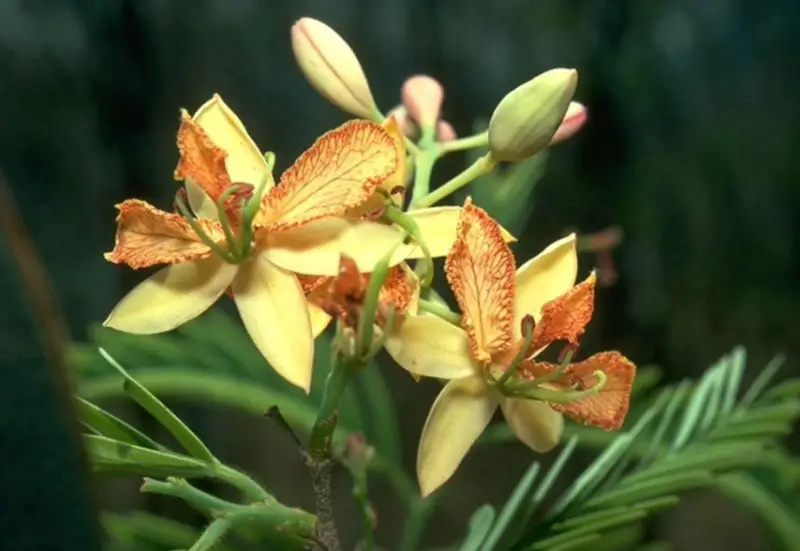
Tamarind flowers are small, yellowish flowers that bloom in clusters on the tamarind tree. The flowers have a subtle, sweet fragrance and attract bees and butterflies. While not as showy as the tree’s fruit, the flowers are important for pollination and contribute to the overall beauty of the tree during its blooming period in late winter or early spring.
The tamarind tree is a large, tropical tree that can reach up to 80 feet in height. It has dark green, pinnate leaves and produces long, hanging clusters of yellow flowers. The tamarind fruit, which is pod-like and brown, contains a tangy pulp that is widely used in cooking.
Tamarind trees require full sun and thrive in well-drained, sandy or loamy soils. They are best suited to USDA zones 10 through 12, where the climate is warm and tropical. The tree is drought-tolerant once established but benefits from regular watering, particularly during dry periods.
Tanacetum coccineum

Tanacetum coccineum, commonly known as the red tansy, is a perennial with striking red daisy-like flowers. The plant blooms in early summer and continues to flower throughout the season. It’s known for its ability to repel pests, particularly aphids, making it a natural insect repellent in gardens.
The plant grows up to 2 feet tall and produces vibrant red flowers with yellow centers. The fern-like leaves give the plant a soft, lacy appearance, which contrasts beautifully with its bold blossoms. Red tansy is often used in herb gardens for its insect-repelling properties.
Tanacetum coccineum thrives in full sun and prefers well-drained, slightly acidic soil. It is best suited to USDA zones 3 through 8, where it can tolerate a range of conditions, including poor soil. Regular pruning and deadheading will encourage more blooms and help keep the plant compact.
Tangerine Marigold (Tagetes spp.)
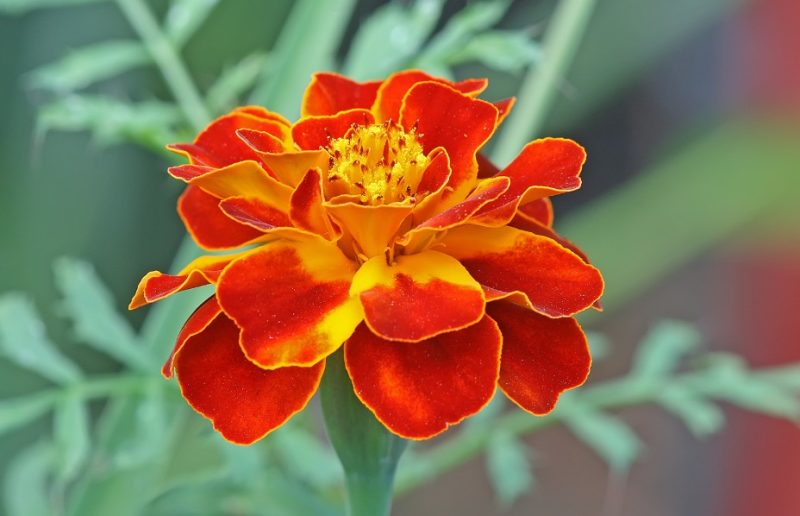
Tangerine marigold is a variety of marigold known for its vibrant orange flowers. These flowers have a distinctive, pleasant fragrance and are often used in ornamental gardening to add a pop of color to borders, containers, or flower beds. Marigolds are known for their ability to deter pests, making them a favorite in vegetable gardens.
The plant grows to about 12 to 18 inches tall and produces numerous bright orange blooms. The leaves are deeply lobed and provide a contrasting backdrop to the bold flowers. Tangerine marigolds are easy to care for and can bloom profusely from early summer until the first frost.
Tangerine marigolds thrive in well-drained soil and require full sun to perform their best. They grow well in USDA zones 9 through 11, where the climate is warm. Regular watering and occasional feeding will help promote vigorous growth and vibrant blooms. Deadheading will encourage additional flowering.
Thunberg Spirea (Spiraea thunbergii)
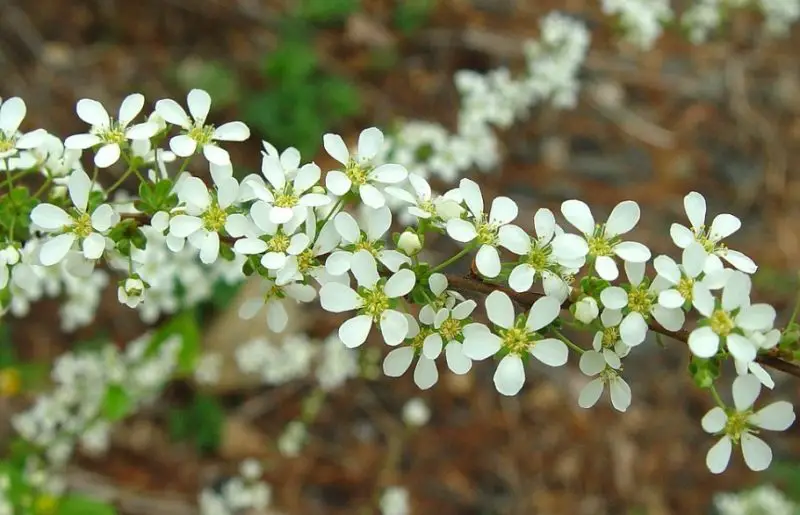
Thunberg spirea is a deciduous shrub known for its delicate white flowers that bloom in early spring. The flowers grow in small clusters along the branches, creating a soft, airy appearance. This spirea variety is popular for its early bloom and its ability to attract pollinators such as bees.
The shrub grows to about 3 to 4 feet in height and spreads about 5 feet wide. The fine, narrow leaves are bright green and turn golden in the fall, providing additional seasonal interest. Thunberg spirea’s compact form makes it suitable for small gardens, hedges, or mixed borders.
Thunberg spirea thrives in full sun to partial shade and prefers well-drained, slightly acidic soils. It is hardy in USDA zones 4 through 8, making it suitable for a wide range of climates. This plant is relatively low-maintenance, requiring only occasional pruning after flowering to maintain its shape.
Tree Marigold (Tithonia diversifolia)
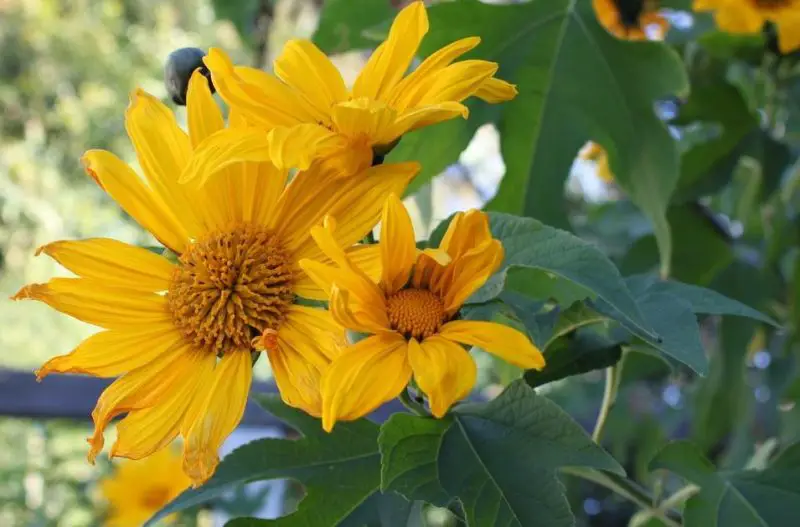
Tree marigold, also known as the Mexican sunflower, is a large, vigorous plant that produces bright yellow or orange flowers. These sunflowers resemble traditional marigolds but are much taller, growing up to 10 feet. Tree marigolds are often seen in tropical and subtropical regions, where they bloom profusely and attract pollinators such as bees and butterflies.
The plant has a bushy, shrub-like habit with large, coarse leaves and sturdy stems. The flowers are daisy-like, with a central disk surrounded by bright petals. Tree marigolds are known for their ability to thrive in poor soil and dry conditions, making them a great choice for xeriscaping.
Tree marigolds prefer full sun and well-drained soil. They are best suited to USDA zones 9 through 11, where they can take advantage of the warmer climate. Once established, the plant is drought-tolerant, but regular watering during dry periods will help maintain vigorous growth and abundant flowering.
Talinum (Talinum paniculatum)
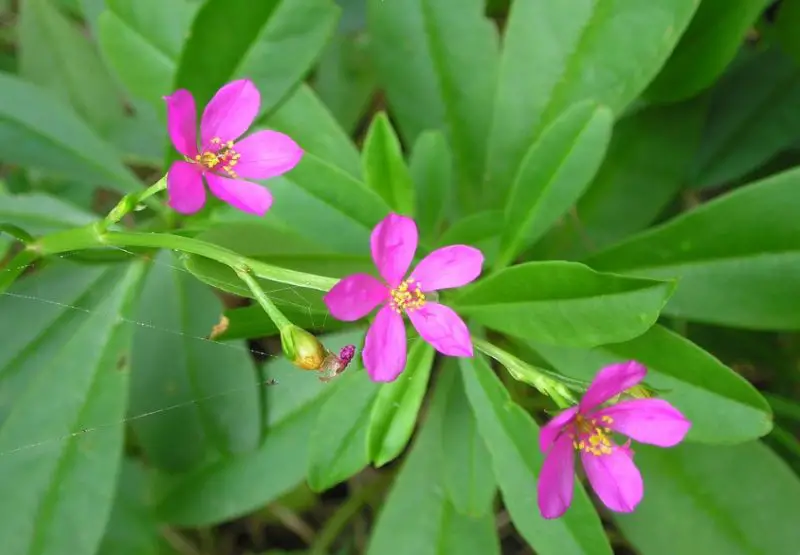
Talinum, commonly known as the “rock flower” or “Jewels of Opar,” is a small, hardy plant that produces delicate pink flowers and glossy black seeds. The flowers are tiny but striking, appearing in clusters on wiry stems. Talinum’s unique seedpods, which resemble small beads, add to its ornamental value.
This plant is well-suited for xeriscaping and container gardening due to its drought tolerance. It can be used for ornamental purposes or grown as a mini bonsai, providing an attractive addition to rock gardens or small spaces. It has a compact growth habit and can reach a height of about 12 to 18 inches.
Talinum thrives in well-drained soil and prefers full sun to partial shade. It is ideal for USDA zones 8 through 11, where it can handle dry, hot conditions. Occasional watering is needed to keep it growing strong, but it can withstand long periods of drought once established.
Turnera (Turnera ulmifolia)
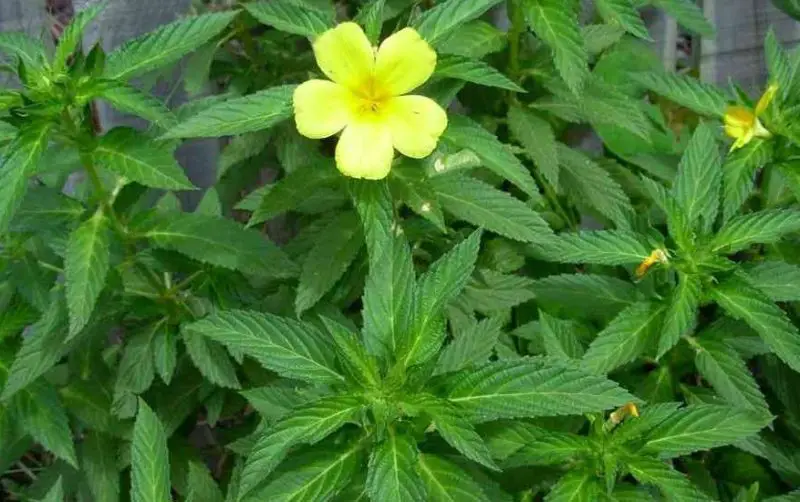
Turnera, also known as “yellow alder” or “Ramgoat Dashalong,” is a tropical shrub known for its bright, yellow flowers. The flowers are small and star-shaped, blooming in the early morning and often closing by midday. They are typically found in tropical regions of Central and South America, where they thrive in warm, humid climates.
Turnera plants have a bushy growth habit with dark green, ovate leaves that provide a contrasting backdrop to the bright blooms. They grow to about 2 to 3 feet in height, making them suitable for garden borders, ground cover, or containers. The plant’s ability to bloom profusely in the mornings adds charm to tropical landscapes.
Turnera prefers well-drained, fertile soil and requires full sun for optimal flowering. It thrives in USDA zones 10 through 11 and can tolerate occasional drought once established. Regular pruning will help maintain a neat, compact form and encourage continuous blooming throughout the growing season.
Tropaeolum peregrinum
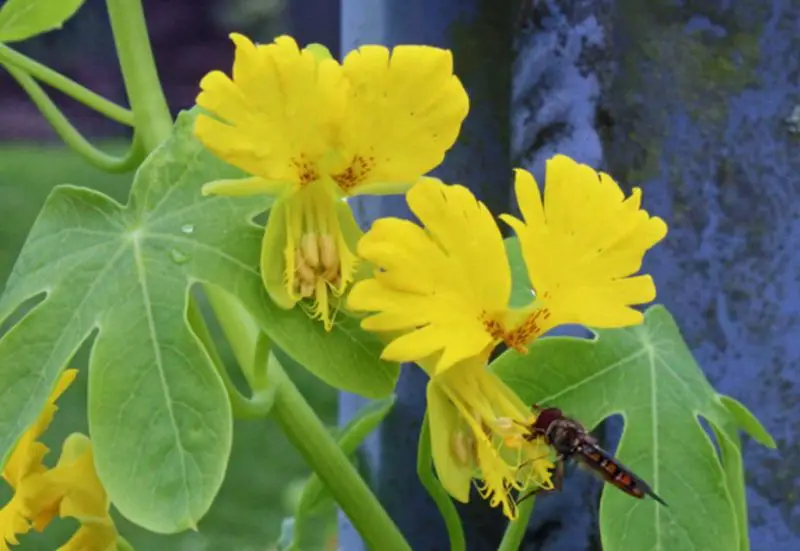
Tropaeolum peregrinum, commonly known as the Canary Creeper, is a fast-growing, vigorous vine known for its unique yellow flowers that resemble the shape of bird wings. The flowers are small but striking, with long, thin petals that spread out like the wings of a bird in flight. This plant is native to South America and is a favorite for trellises, fences, and hanging baskets.
The plant produces an abundance of delicate, bright yellow flowers throughout the summer and into fall, creating a dramatic and cheerful display. The foliage is similarly unique, with rounded, dark green leaves that form a dense mat. Canary Creeper grows rapidly and can reach up to 10 feet in height.
Tropaeolum peregrinum thrives in full sun and prefers well-drained soil. It is well-suited to USDA zones 9 through 11, where the climate is warm. Regular watering will help the plant thrive, but it is drought-tolerant once established. It can be grown as an annual in cooler climates or as a perennial in tropical areas.
Tamarind Orchid (Bauhinia divaricata)
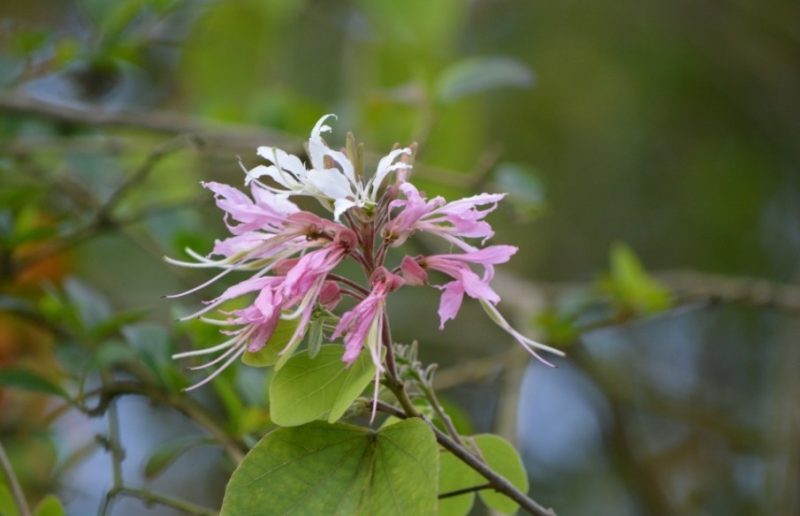
The Tamarind Orchid, also known as Bauhinia divaricata, is a tropical orchid species famous for its striking purple-pink flowers. The flowers have a unique shape, resembling the petals of a tamarind tree, with two large, wing-like petals that resemble the leaves of the tamarind tree itself. These orchids are native to tropical America and are often seen in regions such as the Caribbean and parts of Central and South America.
The plant is a small to medium-sized shrub that can grow up to 6 feet tall. It produces clusters of stunning, fragrant flowers that bloom in late spring to early summer. The plant’s dense foliage complements the delicate blossoms, creating a lovely contrast in the garden.
Tamarind Orchids thrive in tropical or subtropical climates and require well-drained, slightly acidic soil. They prefer full sun but can tolerate partial shade. The plant grows best in USDA zones 9 through 11, where temperatures remain warm year-round. Regular watering and occasional fertilization will help keep the plant healthy and vibrant.
Tamarillo Orchid (Stanhopea tigrina)

The Tamarillo Orchid, or Stanhopea tigrina, is a rare and highly prized orchid known for its intense fragrance and striking appearance. The flowers feature unique, leopard-like spots, with yellow and brown patterns resembling animal fur. These orchids are native to Central and South America and are sought after by orchid collectors due to their rarity and unusual beauty.
Stanhopea tigrina flowers are large and showy, blooming from the plant’s pendulous inflorescences. The flower’s distinctive spots and strong, sweet fragrance make it a favorite in both botanical gardens and private orchid collections. The plant thrives in warm, humid conditions, and its blooms are often found hanging from the plant in a dramatic fashion.
Tamarillo Orchids require a humid environment, bright but indirect light, and well-drained, slightly acidic soil. They grow best in USDA zones 10 through 11, where they can receive the warmth and humidity they need to thrive. They benefit from regular misting and humidity trays, as well as occasional fertilization to promote strong, healthy blooms.
Thalia Dealbata
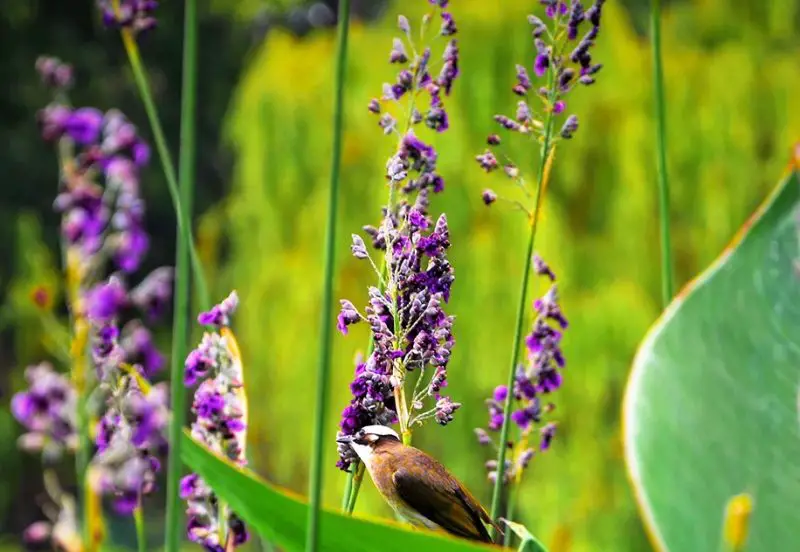
Thalia dealbata, commonly known as the soft rush or water canna, is a water-loving perennial known for its striking pale purple flowers. The flowers appear in clusters atop tall stems, creating a dramatic effect when planted in water gardens or around ponds. This plant thrives in wet conditions, making it ideal for aquatic landscapes or boggy areas.
The plant has tall, slender stems that rise up from the water, with long, narrow leaves that resemble those of a canna plant. Thalia dealbata can grow up to 5 feet in height, providing a vertical accent to aquatic plantings. The soft lavender flowers bloom in late summer to early fall, adding color and texture to the garden.
Thalia dealbata thrives in wet, boggy soil or shallow water, making it a perfect choice for ponds or water gardens in USDA zones 7 through 11. It prefers full sun but can tolerate partial shade. Regular watering is essential, especially during dry periods, but the plant is well-adapted to aquatic environments where it thrives in consistently moist conditions.
Thai Tulip (Curcuma alismatifolia)
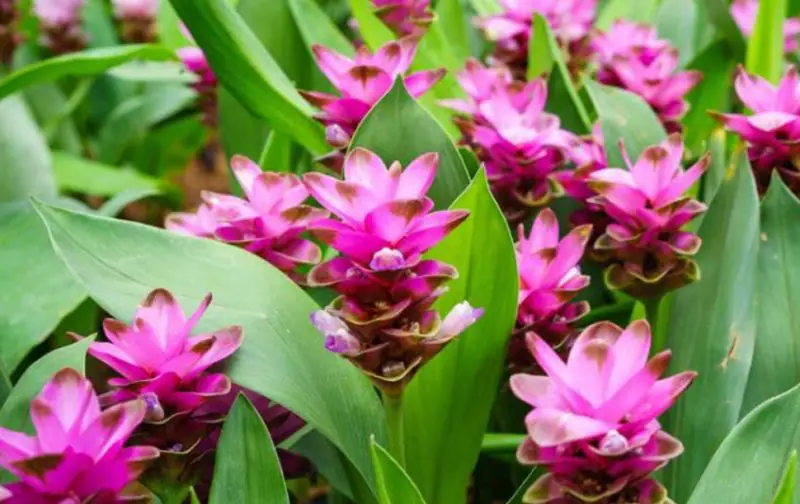
The Thai Tulip, or Curcuma alismatifolia, is a striking tropical flower from the ginger family, often mistaken for a true tulip due to its similar shape. The plant features large, funnel-shaped blooms in shades of purple, pink, or white, with distinct green foliage. It is native to Southeast Asia and thrives in humid climates, blooming during the summer months.
With its bold, colorful flowers and unique appearance, the Thai Tulip is often used in ornamental gardens and floral arrangements. The plant typically grows to about 2 to 3 feet tall, forming a clump of lush, green leaves that contrast beautifully with the vibrant blooms. It is perfect for adding a touch of tropical elegance to your garden.
Thai Tulips prefer well-drained, slightly acidic soil and full sun to partial shade. They thrive in USDA zones 9 through 11, where temperatures remain consistently warm and humid. Regular watering and occasional fertilization will help the plant produce abundant blooms. It is also important to protect the plant from frost, as it is sensitive to cold temperatures.
Triteleia (Triteleia laxa)

Triteleia, commonly known as “Triplet Lily” or “Ithuriel’s Spear,” is a perennial bulb that produces clusters of star-shaped flowers in shades of violet or blue. The blooms appear in late spring or early summer, creating a dramatic effect in gardens. Native to North America, it is often grown in flower beds, rock gardens, or as a cut flower for arrangements.
The flowers of Triteleia grow on tall, slender stems and have six petals that open to reveal a star-like shape. The plant itself reaches about 1 to 2 feet in height and is known for its graceful, arching stems. It is a hardy, low-maintenance flower that adds both elegance and color to any garden.
Triteleia prefers well-drained soil and full sun, though it can tolerate some light shade. It grows best in USDA zones 6 through 9, where it can thrive in dry, rocky conditions. This plant is drought-tolerant once established and requires minimal care. After blooming, it dies back, making it easy to plant other flowers in its place during the off-season.
Telopea (Telopea speciosissima)

Telopea, commonly known as Waratah, is a striking Australian native flower with bold, vibrant red blooms. Known for its large, eye-catching flowers, the Waratah is a symbol of New South Wales. The plant produces clusters of large, tubular flowers with long, narrow petals that form a dense, globular head. Waratahs are typically found in the wild on the eastern coast of Australia, particularly in coastal areas and forests.
This evergreen shrub grows to about 6 to 10 feet in height and is prized for its dramatic flowers, which appear in spring and early summer. The plant’s dark green leaves provide a rich contrast to the bright red flowers, making it a standout in any landscape. Waratah plants are often used as a focal point in gardens or as cut flowers in floral arrangements.
Telopea prefers well-drained, acidic soils and needs full sun to partial shade for optimal growth. It thrives in USDA zones 9 through 11 and is suited to coastal climates with mild winters. Regular watering is essential, especially during dry spells, but the plant is relatively low-maintenance once established. Waratah plants are sensitive to frost, so it is important to protect them from freezing temperatures.
Tecoma stans
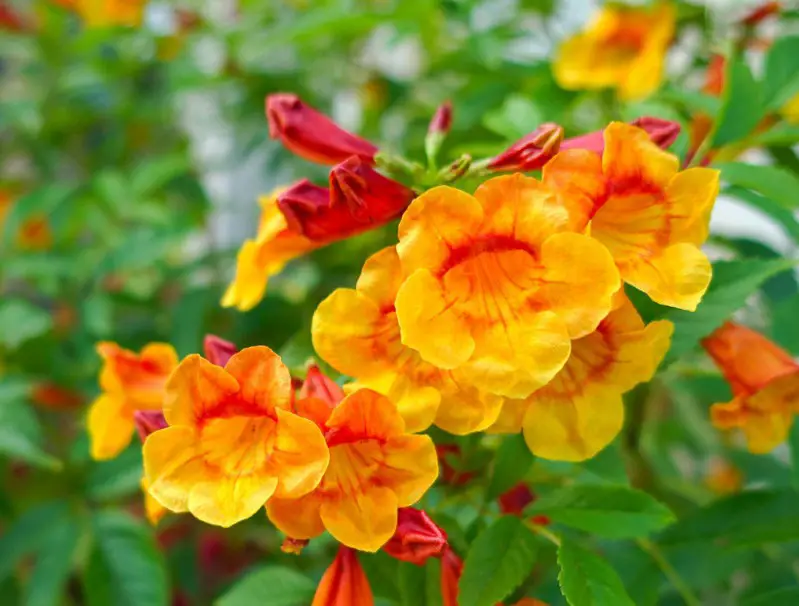
Tecoma stans, commonly known as the Yellow Trumpetflower, is a tropical shrub with large, trumpet-shaped yellow flowers that grow in clusters. The plant is native to the southern United States, Mexico, and Central America, thriving in warm, sunny climates. It is often planted in tropical and subtropical gardens for its vibrant, cheerful blooms.
The flowers of Tecoma stans are bright yellow and attract a variety of pollinators, including bees, butterflies, and hummingbirds. The plant itself grows as a large, bushy shrub that can reach 6 to 10 feet in height, with long, arching branches and deep green leaves. Its attractive flowers make it an ideal choice for creating a colorful border or adding visual interest to a garden.
Tecoma stans requires full sun and well-drained soil to thrive. It is drought-tolerant once established, making it an excellent choice for xeriscaping or low-water gardens. The plant grows best in USDA zones 9 through 11, where it can handle the heat and humidity of tropical and subtropical climates. Regular watering during dry periods will encourage consistent flowering, while occasional pruning can help maintain a neat, compact shape.
Thysanotus tuberosus
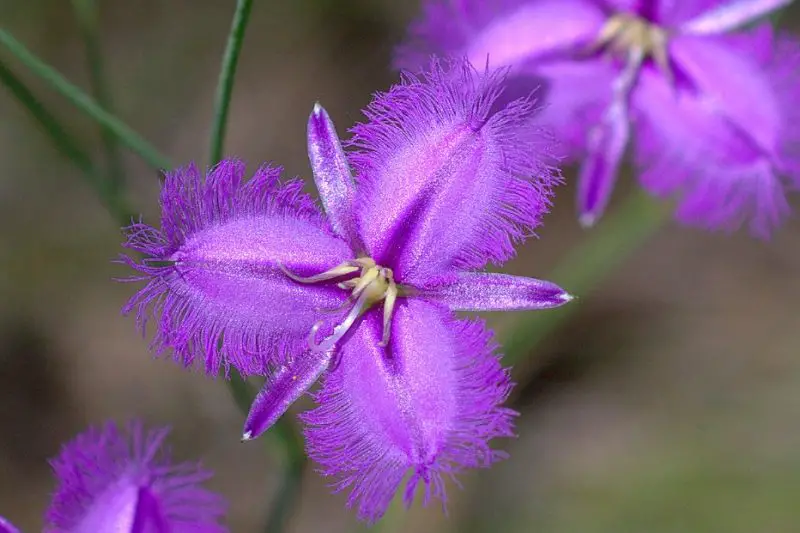
Thysanotus tuberosus, commonly known as the “Fringed Lily,” is a unique flower native to Australia. The plant is known for its striking, dark purple flowers, which have a distinctive fringe-like appearance along the edges of the petals. This beautiful flower belongs to the Asparagus family and is highly regarded for its unusual, eye-catching shape.
Thysanotus tuberosus is a perennial that forms tuberous roots, and it grows up to 12 to 18 inches tall. The flowers appear in late spring or early summer and are often found growing in rocky, well-drained soils in the wild. This plant is typically used in wildflower or native plant gardens, where its beautiful blooms can stand out.
This flower prefers sandy, well-drained soil and full sun but can tolerate some light shade. Thysanotus tuberosus is well-suited to USDA zones 9 through 11, where the climate is dry and warm. It is drought-tolerant once established and requires minimal care, though occasional watering during dry periods will help encourage strong flowering. It is an excellent choice for gardens looking to add a touch of unique, Australian flair.
Tripterospermum japonicum
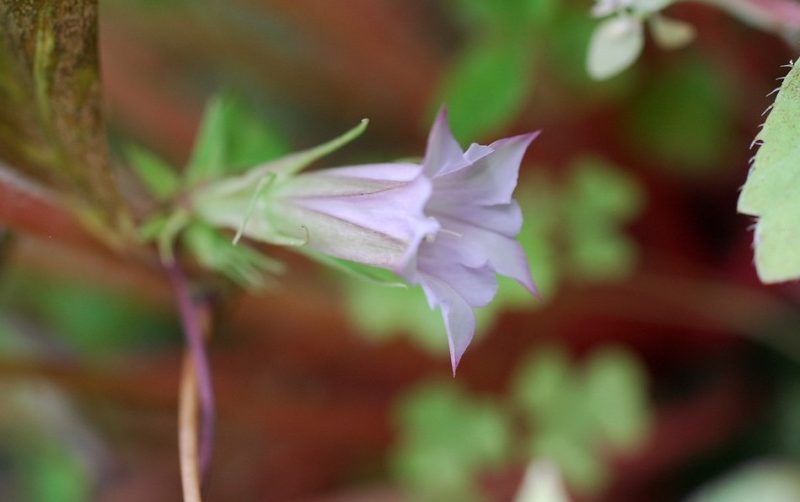
Tripterospermum japonicum is a rare and little-known flowering vine native to the forests of Japan and Korea. The plant produces small, bell-shaped flowers in a delicate lavender to blue color, which are often clustered along the vine. These flowers are primarily grown for their aesthetic value, but they are not commonly cultivated outside their native regions.
The vine can grow to a height of 10 feet, with slender, woody stems and dark green leaves that provide a nice backdrop to the soft-colored blooms. It is a slow-growing plant that thrives in shaded woodland environments, making it ideal for shaded garden areas or trellises. Tripterospermum japonicum is often seen growing in wild settings in Japan and Korea but is rarely found in other parts of the world.
This plant prefers moist, well-drained soil and partial to full shade. It is most suitable for USDA zones 6 through 9, where the climate is cool and moist, mimicking its natural forest habitat. It is not particularly drought-tolerant and requires regular watering to keep the soil consistently moist. Due to its rarity, it is typically cultivated by avid gardeners or as part of specialty plant collections.
Trifolium pratense (Red Clover)
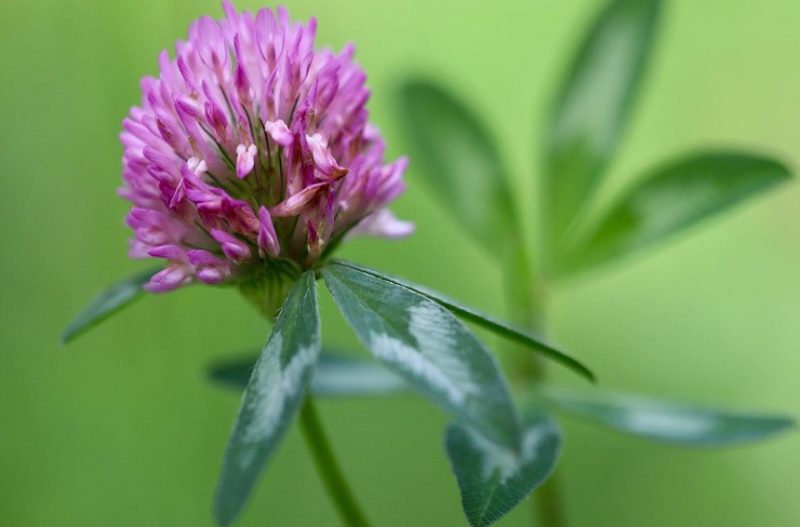
Trifolium pratense, commonly known as Red Clover, is a perennial herb often found growing wild in temperate meadows and grasslands. The plant is known for its striking, round clusters of pink to purple flowers that sit atop tall, slender stems. Red Clover is not only an attractive addition to natural landscapes but is also widely used for its medicinal properties, such as promoting heart health and supporting menopausal relief.
Typically, Red Clover reaches about 1 to 3 feet in height and is easily identified by its trifoliate leaves (three leaflets) and its clustered blooms. It is often found in fields, pastures, and roadsides, thriving in nutrient-rich, well-drained soil. This plant can also serve as a natural ground cover to suppress weeds in gardens and agricultural settings.
Red Clover grows best in USDA zones 3 to 9, requiring full sun to partial shade and moderate watering. While it is drought-tolerant once established, it benefits from regular rainfall or irrigation in drier climates. As a nitrogen-fixing plant, it improves soil fertility and is commonly used as a cover crop in organic farming.
Tacca chantrieri (Black Bat Flower)
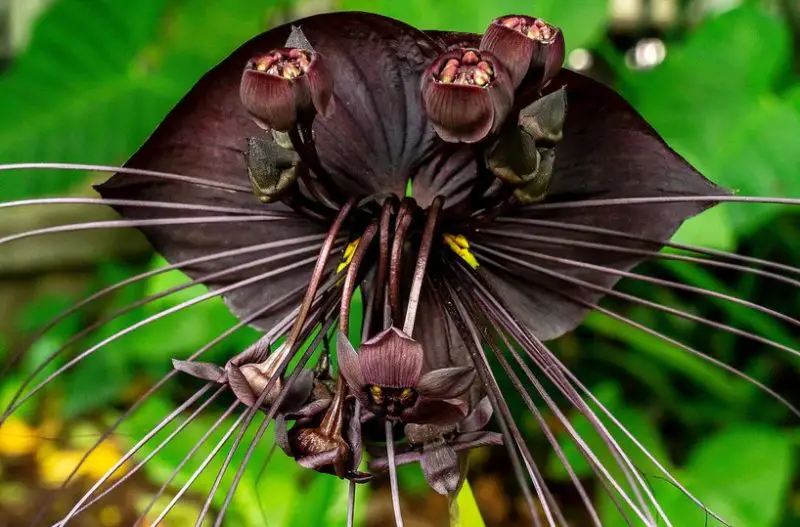
Tacca chantrieri, known as the Black Bat Flower, is a highly unusual tropical plant famous for its dark, bat-shaped flowers. The flowers have long, wispy tendrils that resemble bat wings and are typically dark purple to black in color. This striking appearance makes it a conversation piece in any garden or greenhouse. Native to Southeast Asia, it thrives in warm, humid environments and is often grown in greenhouses or shaded areas in gardens.
The Black Bat Flower grows from a tuber and can reach up to 3 to 4 feet in height. It features large, broad, dark green leaves that provide an elegant contrast to the dark flowers. This plant is relatively slow-growing but becomes a fascinating centerpiece when it blooms. It requires specific care, including high humidity and a temperature range between 65°F to 85°F (18°C to 29°C).
Tacca chantrieri prefers well-drained, rich, organic soil and needs filtered light or partial shade. It thrives in USDA zones 10 to 11, where the climate remains consistently warm. Regular watering is essential to maintain the humidity levels it needs, but care must be taken to avoid waterlogging. This plant is best suited for indoor cultivation in temperate regions due to its temperature sensitivity.
Torilis japonica (Japanese Hedge Parsley)

Torilis japonica, or Japanese Hedge Parsley, is a wild-growing herb native to East Asia, including Japan and parts of China. It is easily recognizable by its delicate clusters of small white flowers that bloom in the summer. The plant has finely divided leaves and can be found in fields, grasslands, and roadsides, often growing in disturbed soils.
The flowers of Torilis japonica are arranged in umbels, giving the plant a lacy, airy appearance. It grows between 1 and 3 feet tall, with stems that may be hairy or smooth. Although often regarded as a weed in many regions, it plays an important ecological role by providing food for pollinators, such as bees and butterflies.
This plant thrives in USDA zones 4 to 9, where it prefers full sun and well-drained soil. It is tolerant of a variety of soil types, including poor soils, and can withstand drought once established. However, Torilis japonica tends to spread aggressively and may require management if grown in garden settings.
Tephrosia villosa (Velvety Tephrosia)
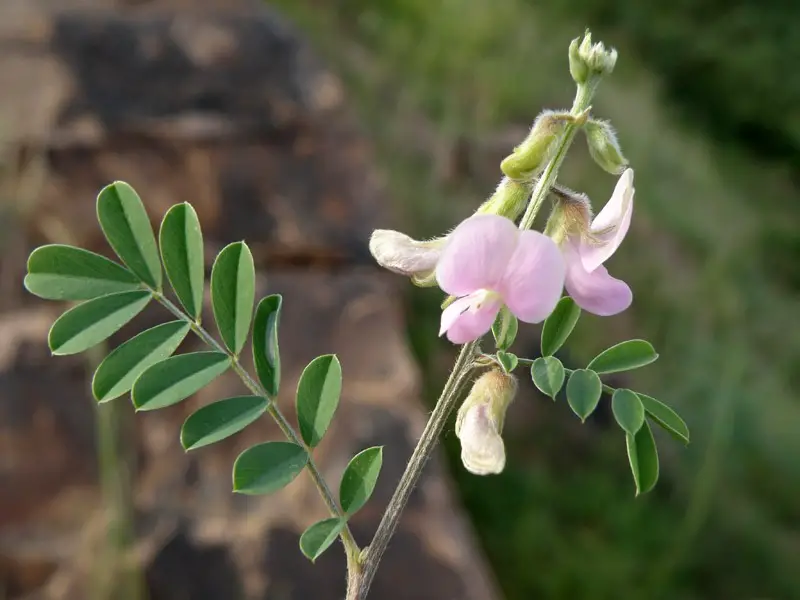
Tephrosia villosa, or Velvety Tephrosia, is a leguminous plant native to semi-arid regions. It is known for its soft, velvety foliage and striking pinkish-purple flowers that appear in dense clusters. The plant is often found in dry, rocky soils and is well-adapted to arid ecosystems. Tephrosia villosa is part of the Fabaceae family and is valued for its drought tolerance and ability to improve soil fertility.
The flowers of Tephrosia villosa are small, pea-like, and grow in clusters along the stems. The plant typically reaches a height of 1 to 2 feet and has a spreading growth habit. Its leaves are pinnate with multiple leaflets, giving it a feathery appearance. This plant is often used in xeriscaping or as a ground cover for dry gardens.
Tephrosia villosa grows best in USDA zones 9 to 11, where it enjoys full sun and well-drained soil. Once established, it is drought-tolerant and requires little maintenance, making it an excellent choice for water-efficient landscapes. Regular pruning after flowering can help maintain a tidy appearance and promote new growth.
Thelymitra ixioides (Sun Orchid)

Thelymitra ixioides, known as the Sun Orchid, is a striking species of orchid native to Australia. It is notable for its bright, vibrant purple flowers, which are typically only open and visible when the sun is shining. This fascinating feature makes the Sun Orchid an unusual and highly sought-after plant among collectors. The flowers have a star-like shape and sit atop slender stems that can grow up to 1 to 2 feet tall.
The Sun Orchid’s blooming period occurs in late spring to early summer, with each flower lasting only a day or two. The plant prefers the temperate climates of Australia, where it can be found growing in open woodlands or along grasslands. Its striking appearance and elusive blooming pattern make it a wonderful addition to wildflower gardens or native plant collections.
Thelymitra ixioides thrives in USDA zones 9 to 11, requiring well-drained, slightly acidic soil and full sun. It should be watered regularly during its growing season, but care should be taken to avoid waterlogging. This orchid can be grown successfully in temperate areas or indoor environments where sunlight is abundant.
Tetragonia tetragonioides (New Zealand Spinach)
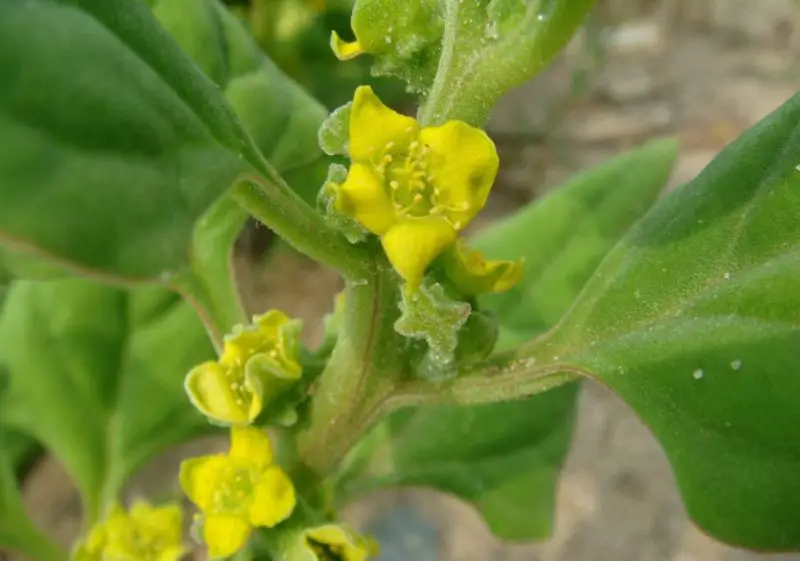
Tetragonia tetragonioides, also known as New Zealand Spinach, is a leafy green vegetable plant that produces small, yellow flowers, often overlooked due to the plant’s primary use as an edible crop. It is native to the coastal regions of New Zealand and Australia and is typically grown for its nutritious leaves, which are used in salads, soups, and other dishes. Despite its small, inconspicuous flowers, the plant is valued for its versatility and drought tolerance.
The plant has thick, fleshy leaves that are rich in vitamins and minerals, making it a healthy addition to any garden. New Zealand Spinach can grow up to 2 feet tall and spreads out, forming a dense mat of leaves. It thrives in coastal and temperate environments, often growing in sandy, well-drained soil.
Tetragonia tetragonioides grows well in USDA zones 9 to 11 and prefers full sun or light shade. It is heat and drought-tolerant once established, making it an excellent choice for xeriscaping or low-maintenance gardens. Regular watering is needed to ensure healthy leaf production, but the plant is generally easy to grow and care for, especially in areas with mild winters.
Tritonia crocata (Flame Freesia)
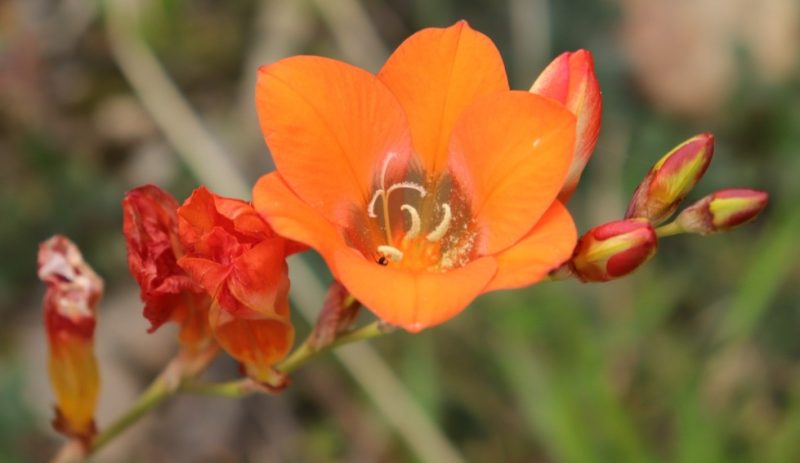
Tritonia crocata, commonly referred to as Flame Freesia, is a vibrant member of the Iris family native to South Africa but widely cultivated in European gardens. This bulbous plant produces brilliant orange flowers with flared petals that resemble miniature flames, making it a striking choice for spring and early summer borders. Each flower cluster rises on slender, upright stems above grass-like foliage.
Growing up to 1 to 2 feet in height, Tritonia crocata blooms in late spring and thrives in sunny, well-drained spots. The flowers are lightly fragrant and attract pollinators such as bees and butterflies. With its dazzling color and tidy growth habit, it’s often included in mixed flower beds and rock gardens.
Tritonia crocata is suited to USDA hardiness zones 8 to 10. In cooler climates, bulbs should be lifted before winter and stored indoors. The plant prefers full sun and benefits from moderate watering during its growing season, with reduced moisture once it enters dormancy.
Thymus serpyllum (Wild Thyme)

Thymus serpyllum, also known as Wild Thyme or Creeping Thyme, is a low-growing, aromatic herbaceous plant known for its tiny pink to purple flowers and dense mat-forming foliage. Native to Europe and parts of Asia, this hardy perennial is a favorite for ground cover, rock gardens, and herb gardens due to its fragrance and resilience.
The plant typically reaches 2 to 4 inches in height but spreads widely, creating a living carpet that blooms profusely in summer. Its small, tubular flowers are highly attractive to bees and other pollinators. Apart from ornamental use, Wild Thyme is also appreciated in traditional medicine for its antiseptic and soothing properties.
Thymus serpyllum thrives in USDA zones 4 to 9. It prefers full sun, well-drained soil, and minimal watering once established. This drought-tolerant herb is an excellent option for xeriscaping and thrives even in poor soils, requiring little maintenance and no fertilization.
Tropidia polystachya (Dancing Lady Orchid)

Tropidia polystachya is a small, terrestrial orchid native to the tropical forests of Central America and the Caribbean. Often called the Dancing Lady Orchid due to the unique, flowing shape of its flowers, it typically grows under the canopy of moist, shaded woodlands. The flowers are small, greenish to yellow-brown, and appear in long racemes that rise above the basal leaves.
This orchid grows up to 1 to 2 feet in height and thrives in leaf litter and humus-rich forest soils. It is not commonly cultivated but is of significant interest to botanists and orchid researchers for its adaptation to terrestrial environments and its pollination strategies.
Tropidia polystachya grows best in USDA zones 10 to 11, where warm, humid conditions prevail. It requires filtered light, consistent moisture, and a well-drained, humus-rich substrate. In cultivation, it is best suited to greenhouse environments or specialized orchid collections.
Tabebuia rosea (Pink Trumpet Tree)
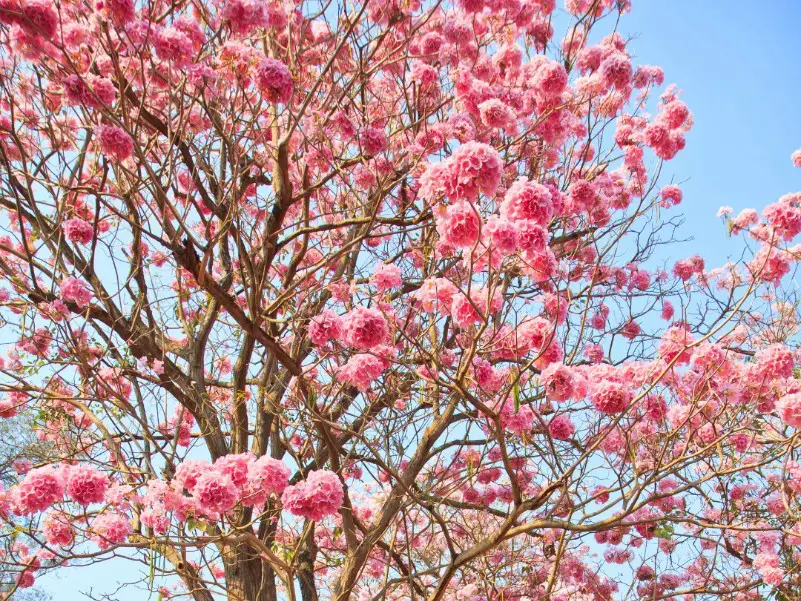
Tabebuia rosea, often known as the Pink Trumpet Tree, is a majestic flowering tree native to Central and South America and widely cultivated in Southeast Asia. It produces large, trumpet-shaped flowers in brilliant shades of pink to lavender, often blooming in massive clusters during the dry season when the tree is leafless, creating a breathtaking floral display.
This deciduous tree can grow up to 60 feet tall, with a broad canopy and gray, fissured bark. The flowers are followed by long, slender seed pods. Its fast growth, showy blooms, and tolerance for tropical climates make it a popular choice for city streets, parks, and large gardens.
Tabebuia rosea thrives in USDA zones 9 to 11. It prefers full sun and well-drained soil, and it is relatively drought-tolerant once established. Though it sheds its leaves seasonally, it rebounds quickly, rewarding gardeners with spectacular floral performances year after year.
Triplaris americana (Ant Tree)
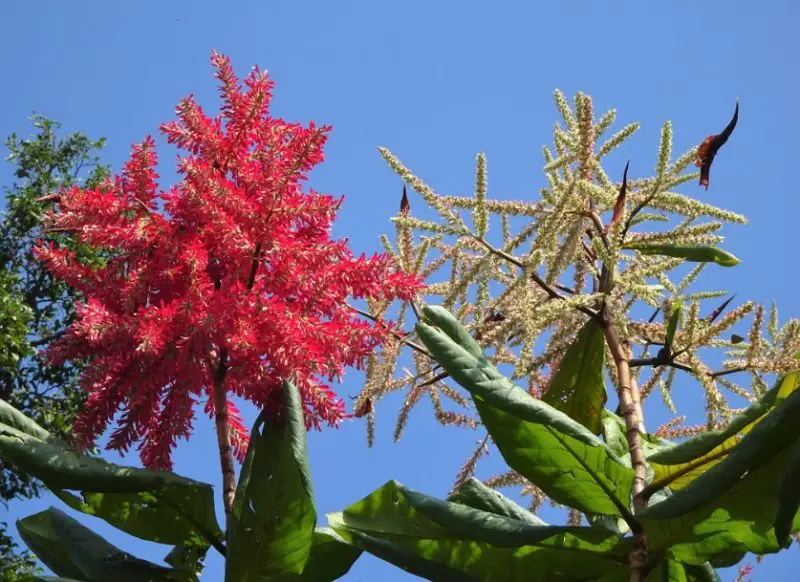
Triplaris americana, commonly known as Ant Tree or Pink Powderpuff Tree, is a fast-growing tropical tree known for its ornamental, bright reddish-pink flowers. Native to the rainforests of Central and South America, it earns its nickname from its symbiotic relationship with ants that inhabit its hollow stems and help protect it from herbivores.
This tree can reach heights of up to 80 feet, with large, spear-shaped leaves and fluffy panicles of flowers that bloom profusely in warm climates. The colorful blooms are especially attractive to pollinators and make it a focal point in tropical gardens and landscapes.
Triplaris americana is best suited to USDA zones 10 to 11, thriving in full sun and moist, well-drained soils. It benefits from consistent watering and warm conditions year-round. Due to its aggressive root system and height, it is best planted away from buildings or smaller plants.
Tricliceras longipedunculatum
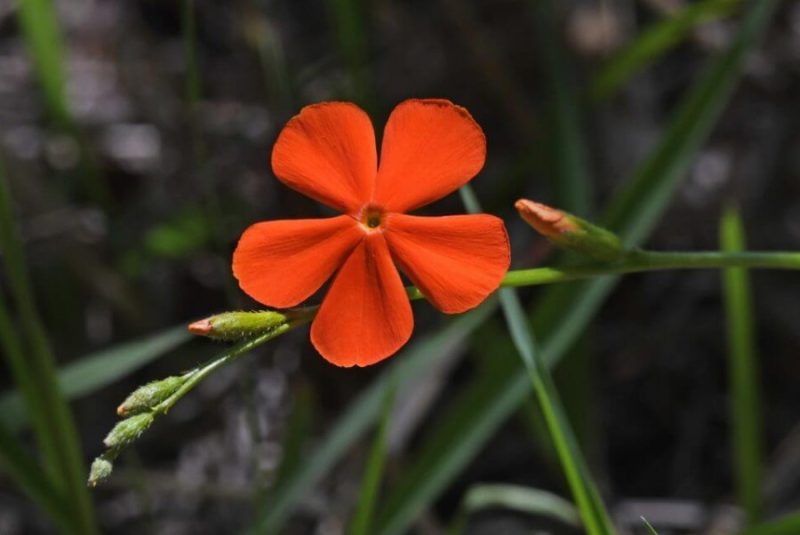
Tricliceras longipedunculatum is a rare and lesser-known flowering plant in the Passifloraceae family, native to Eastern Africa. It bears small, delicate white flowers with long stalks (peduncles), which give it a graceful appearance. Due to its scarcity and limited range, this plant is primarily of interest to botanists and plant researchers.
Typically found in semi-arid regions and open woodlands, Tricliceras longipedunculatum has an upright growth habit and produces solitary flowers that bloom in favorable conditions. The flowers are subtle but intricate, with petal structures that may resemble other passionflower relatives.
This species is adapted to USDA zones 10 to 11, preferring warm temperatures, well-drained soil, and full sun to partial shade. While it is not widely cultivated, its rarity makes it significant in the study of floral diversity and plant adaptation in arid and sub-arid ecosystems.
Read More:






